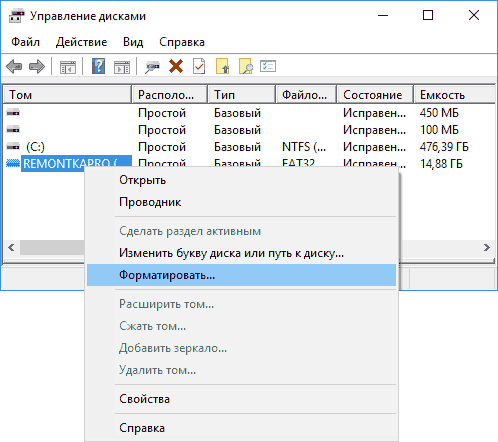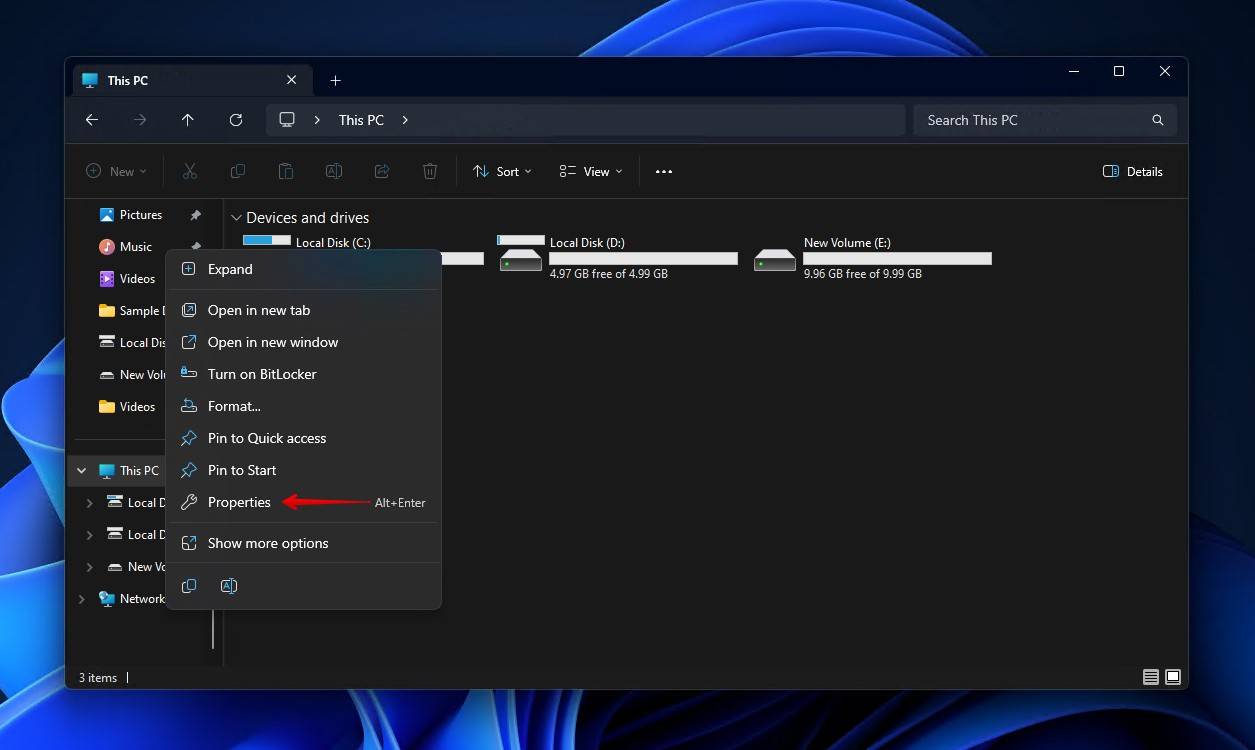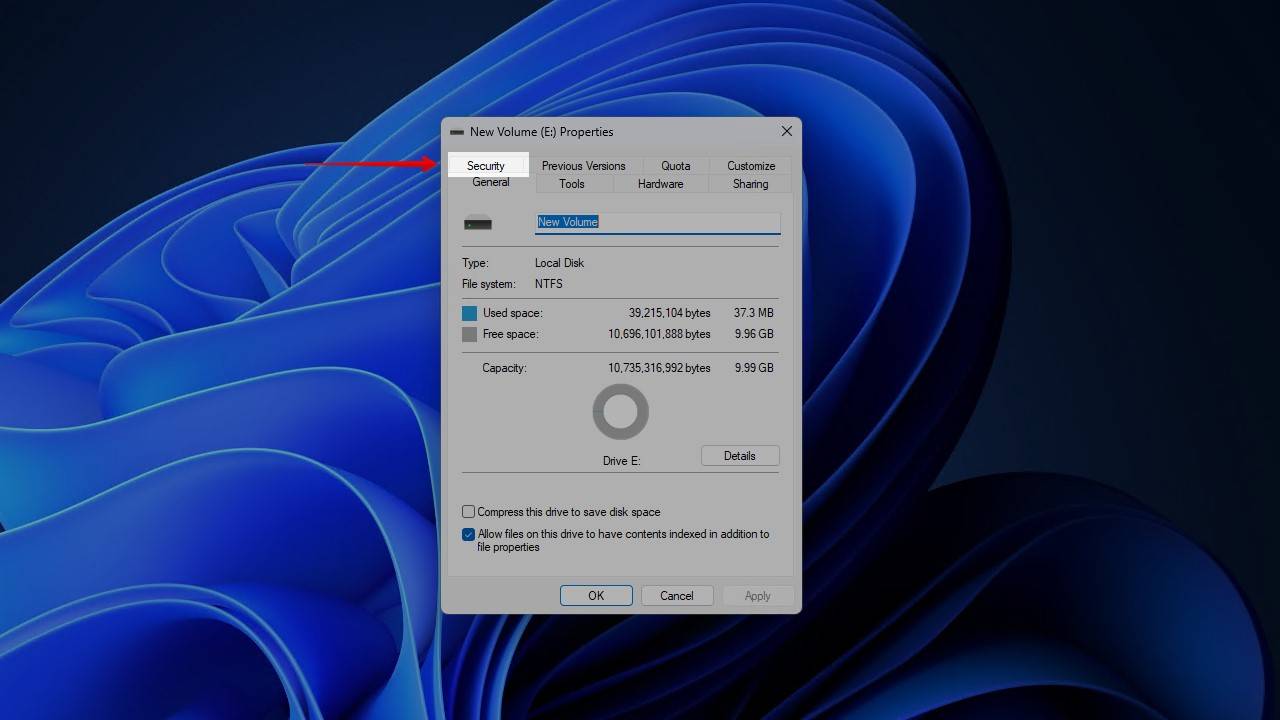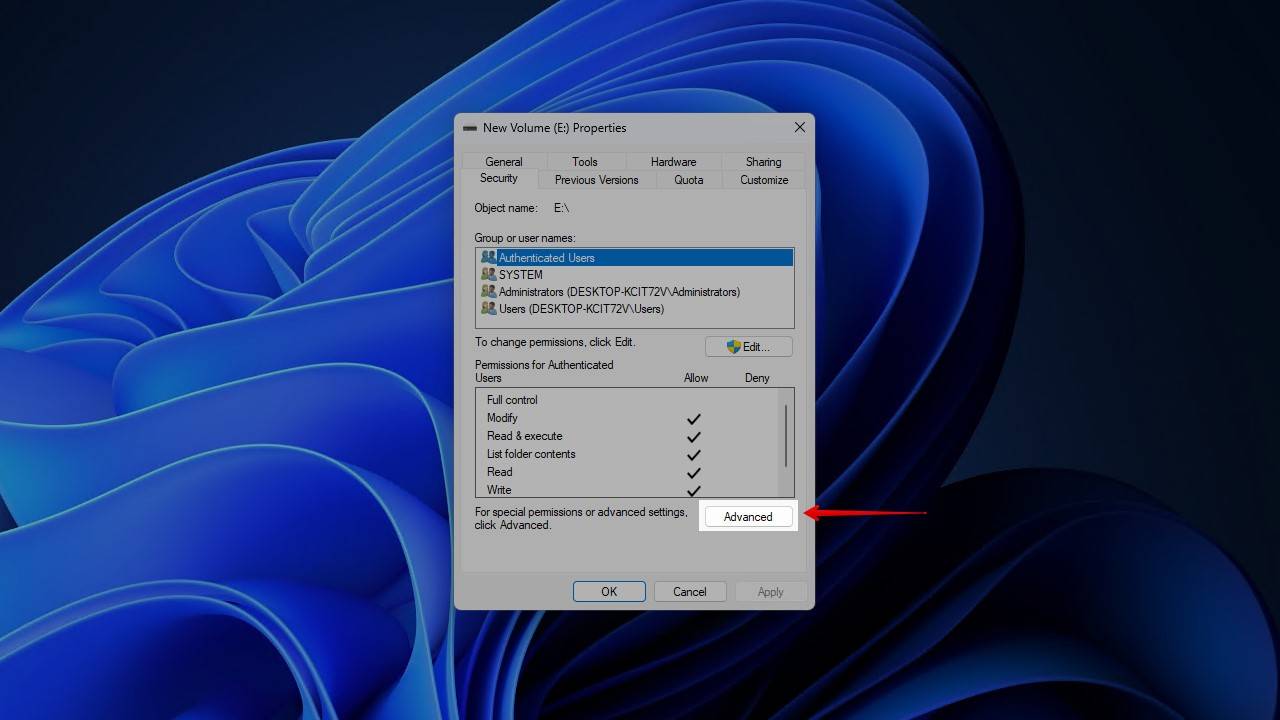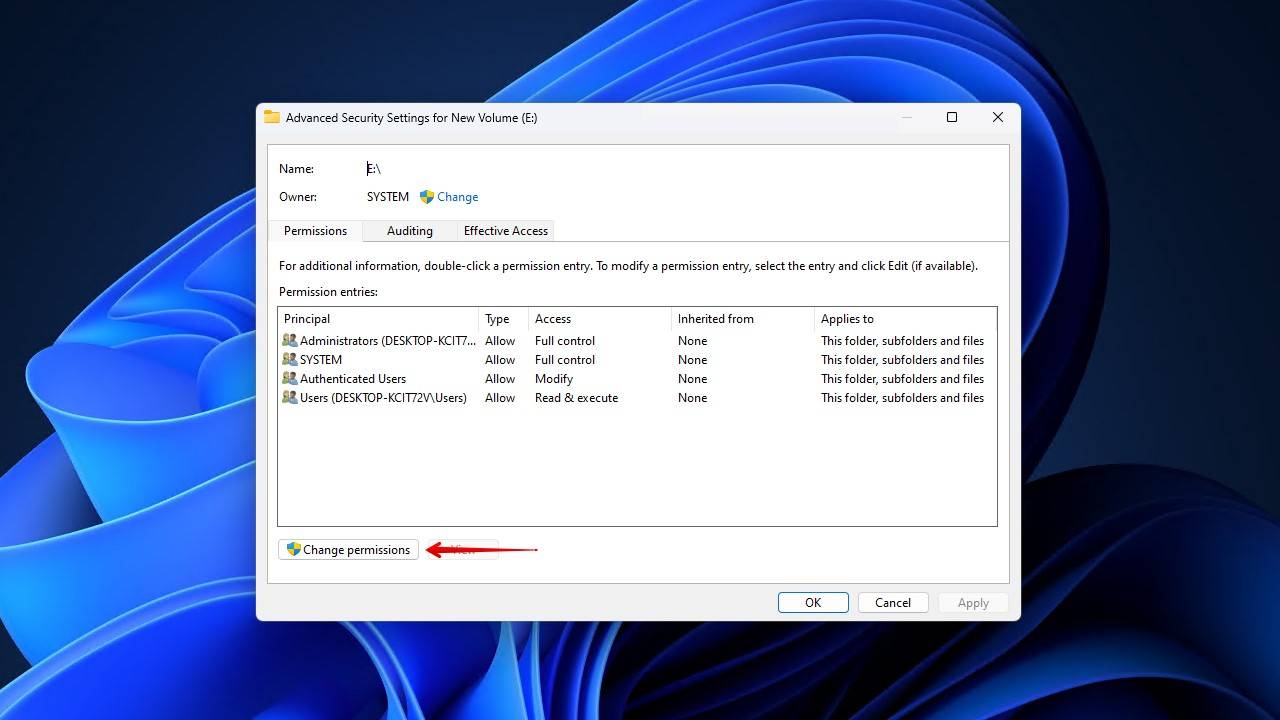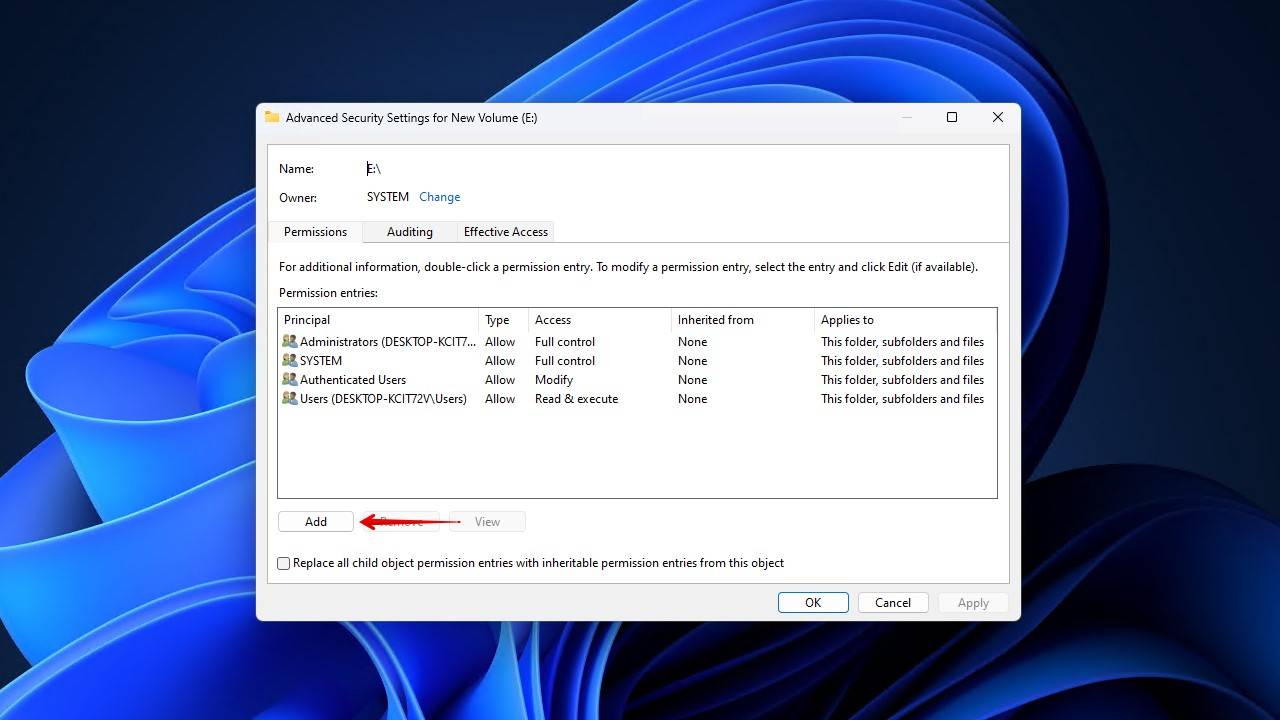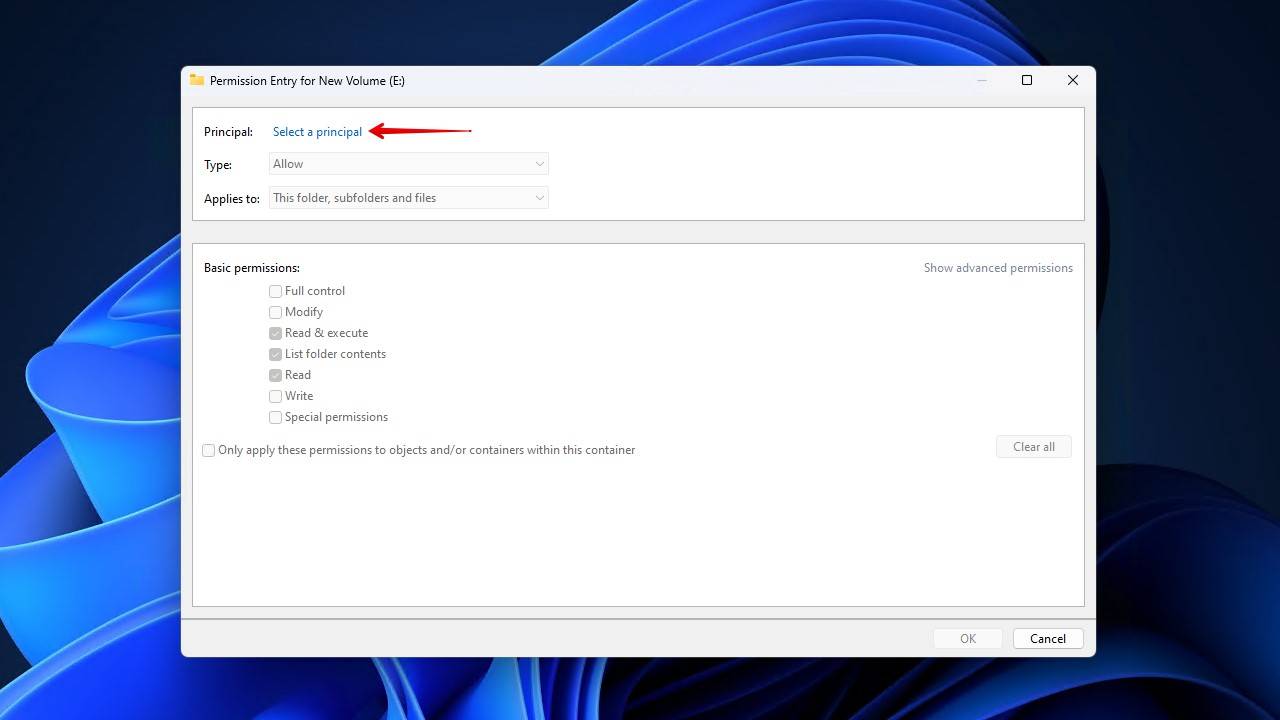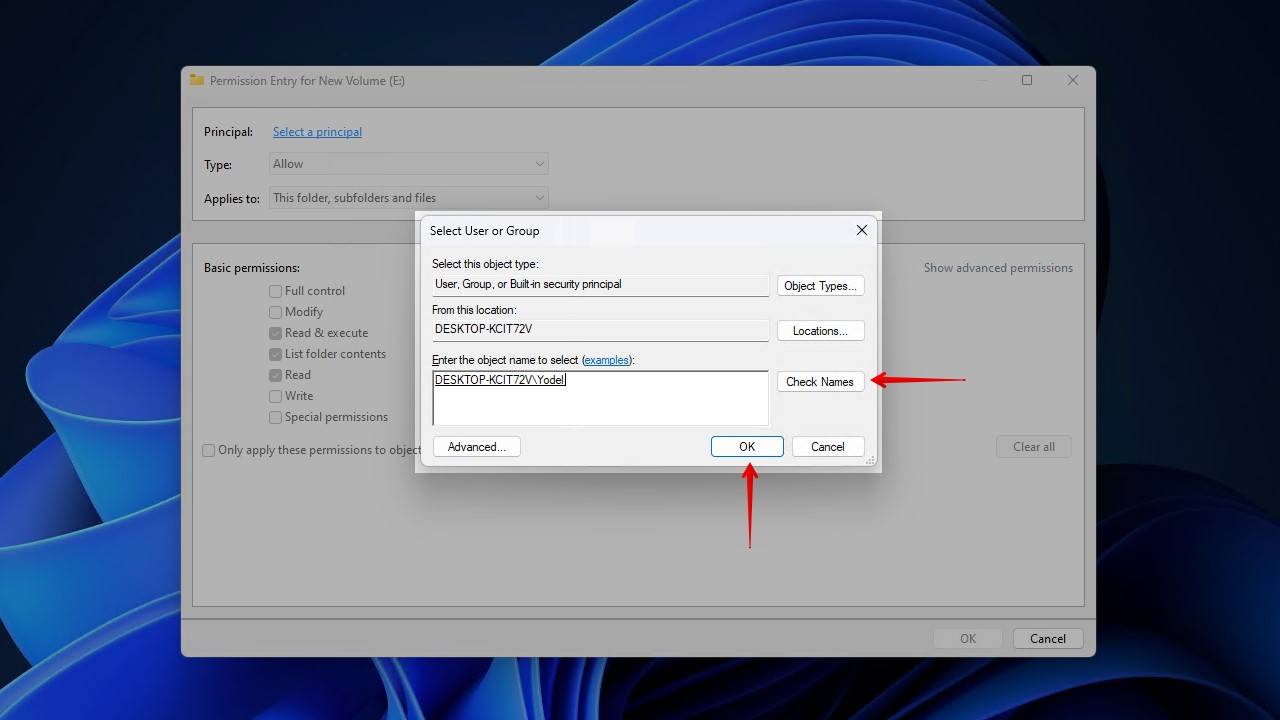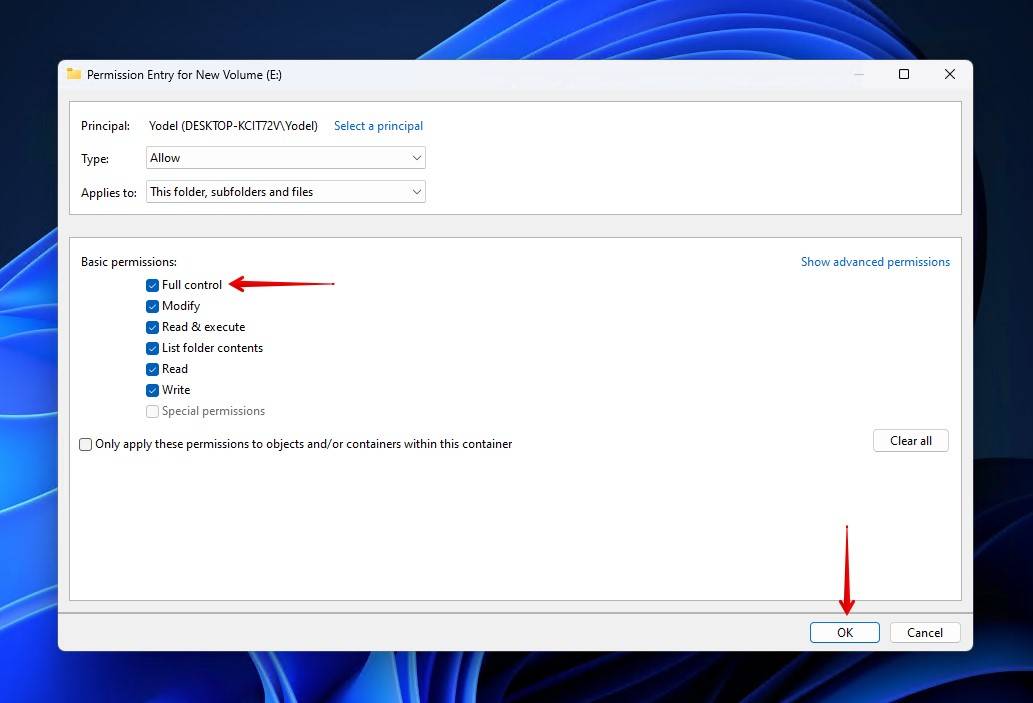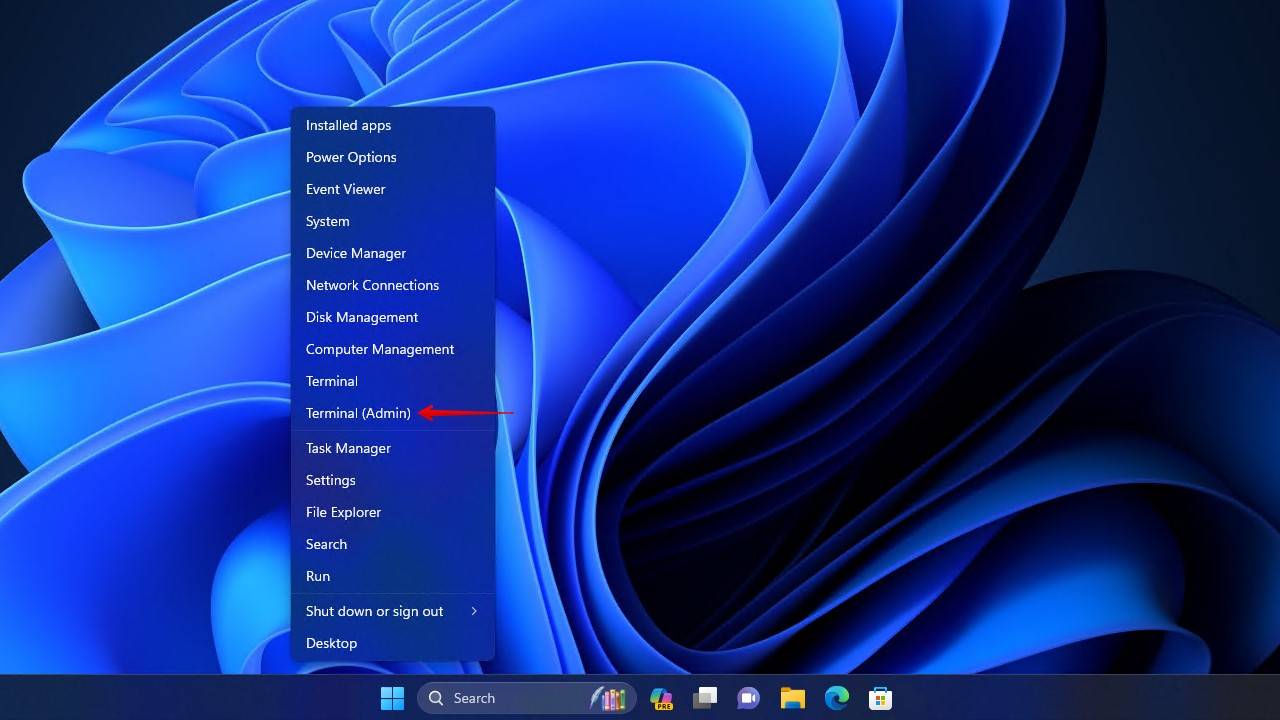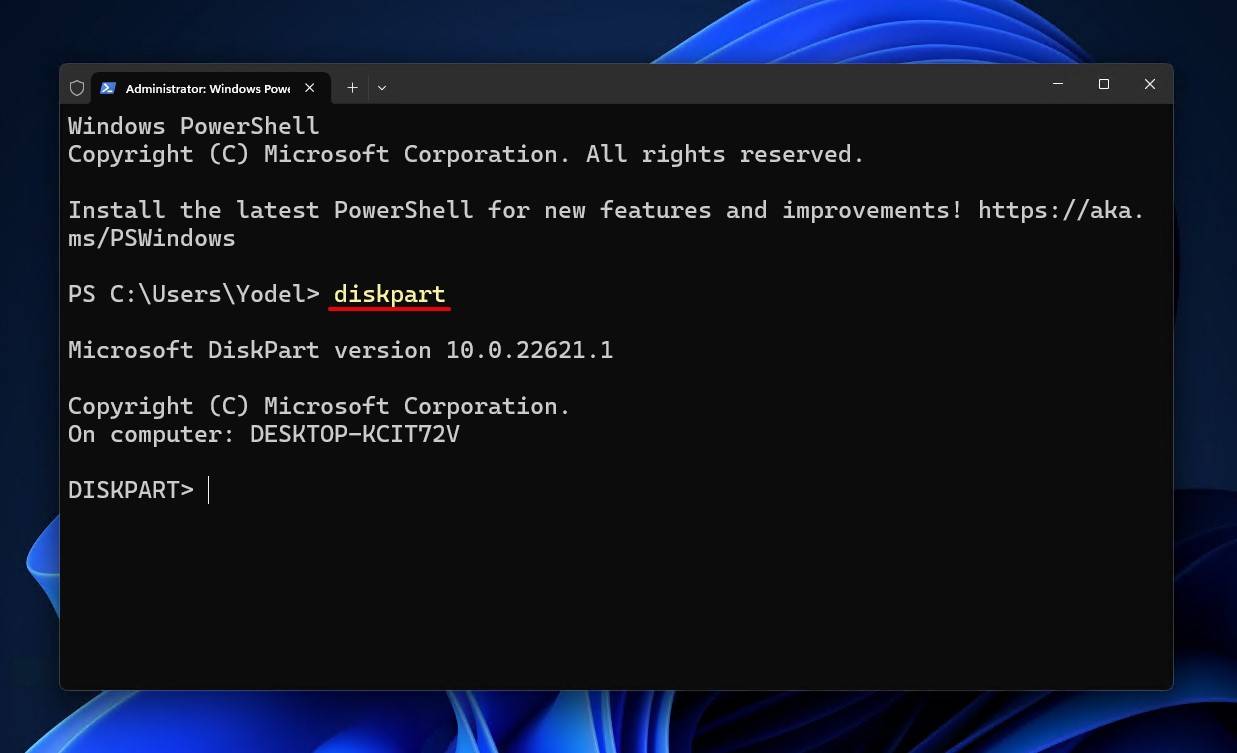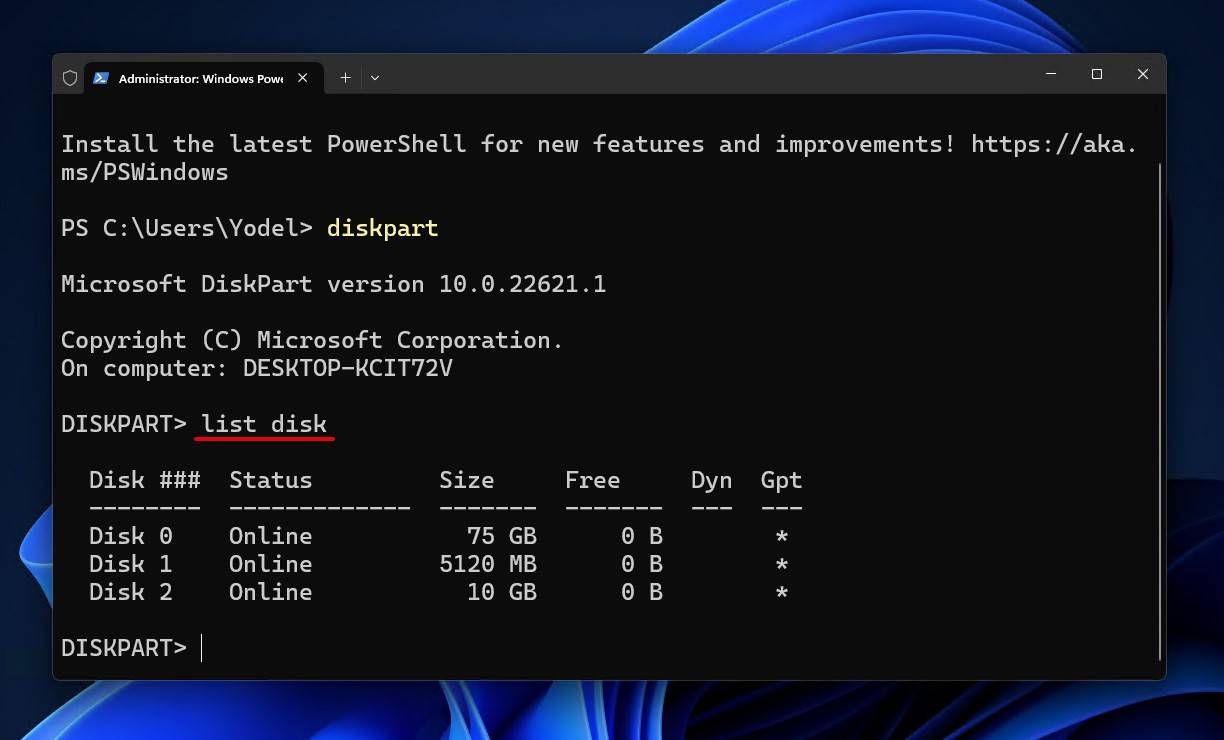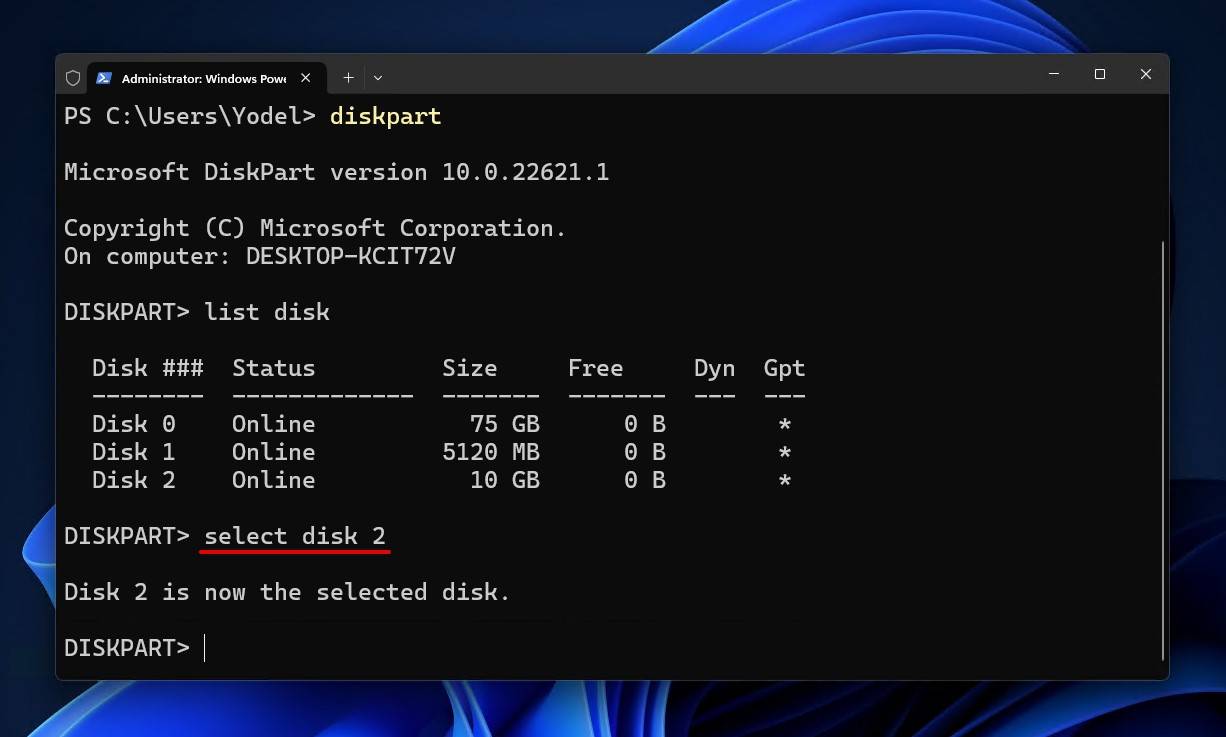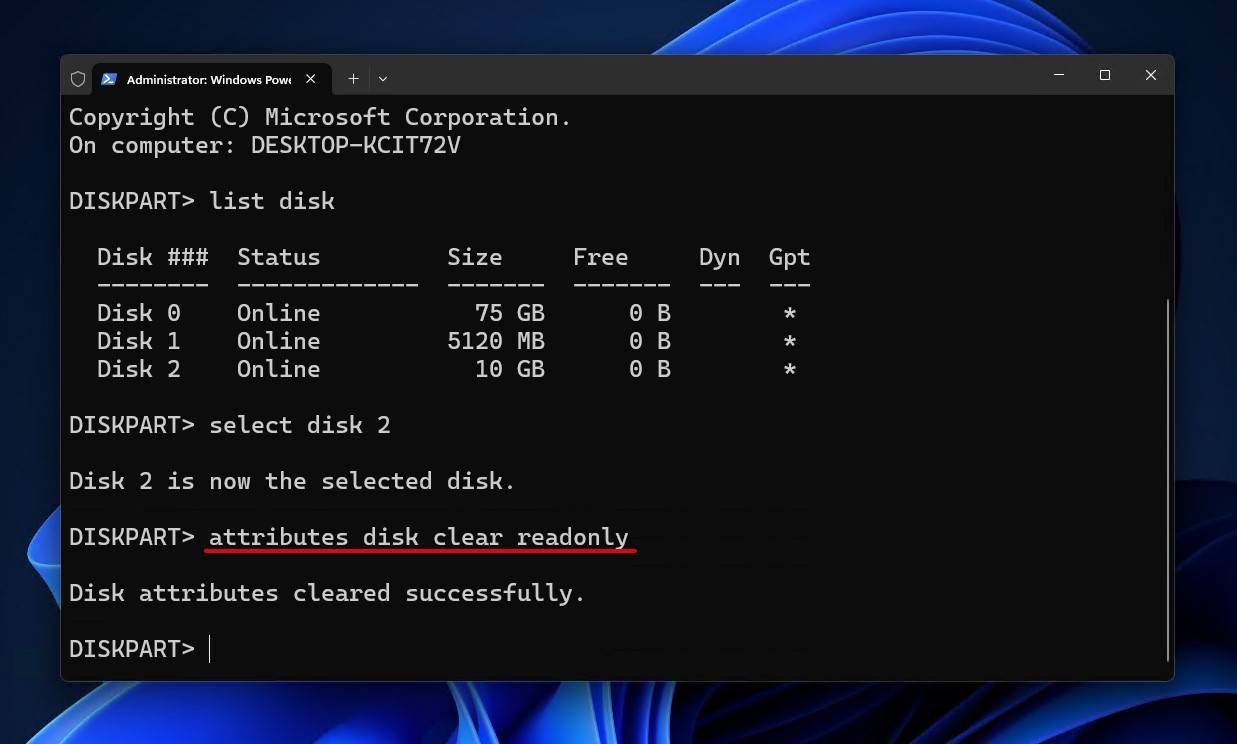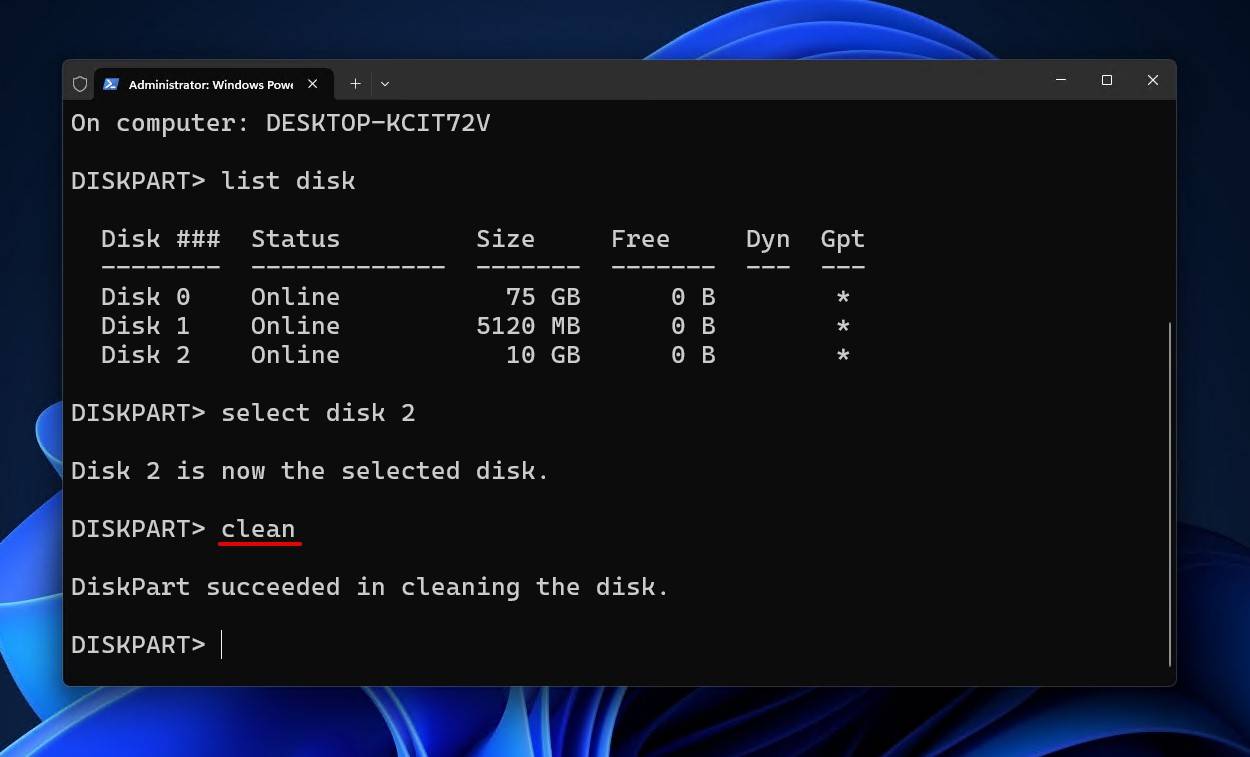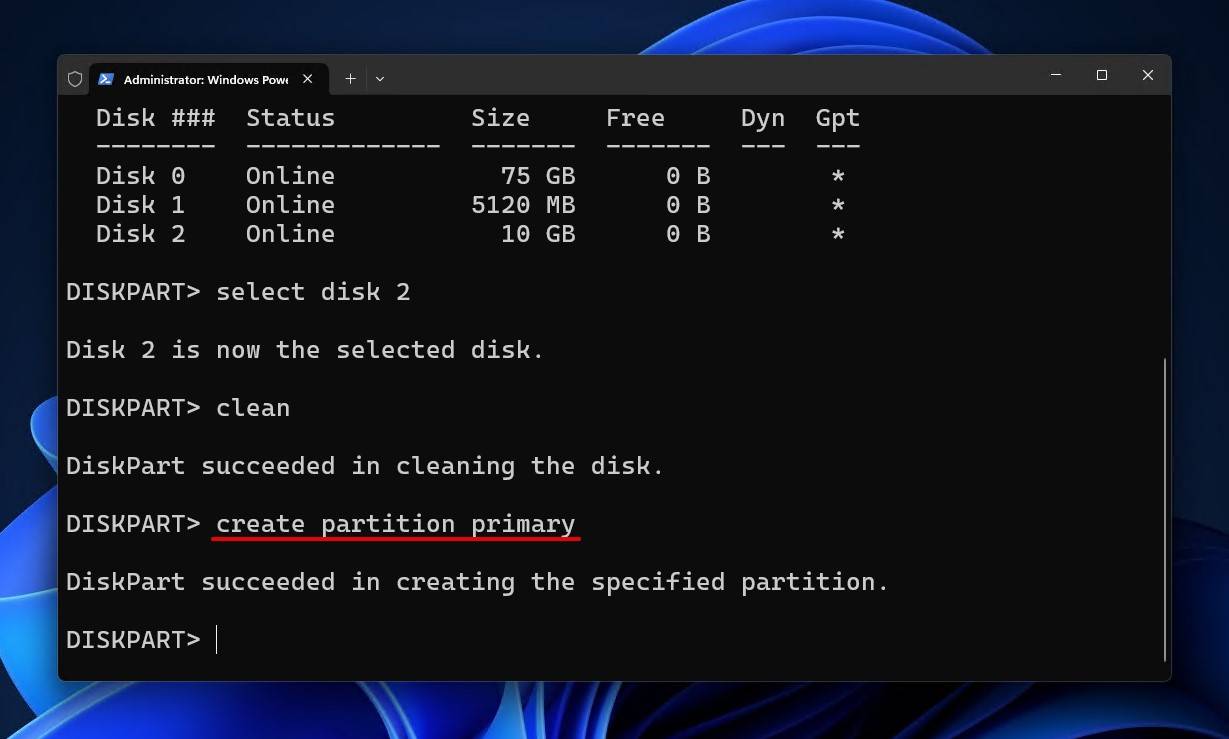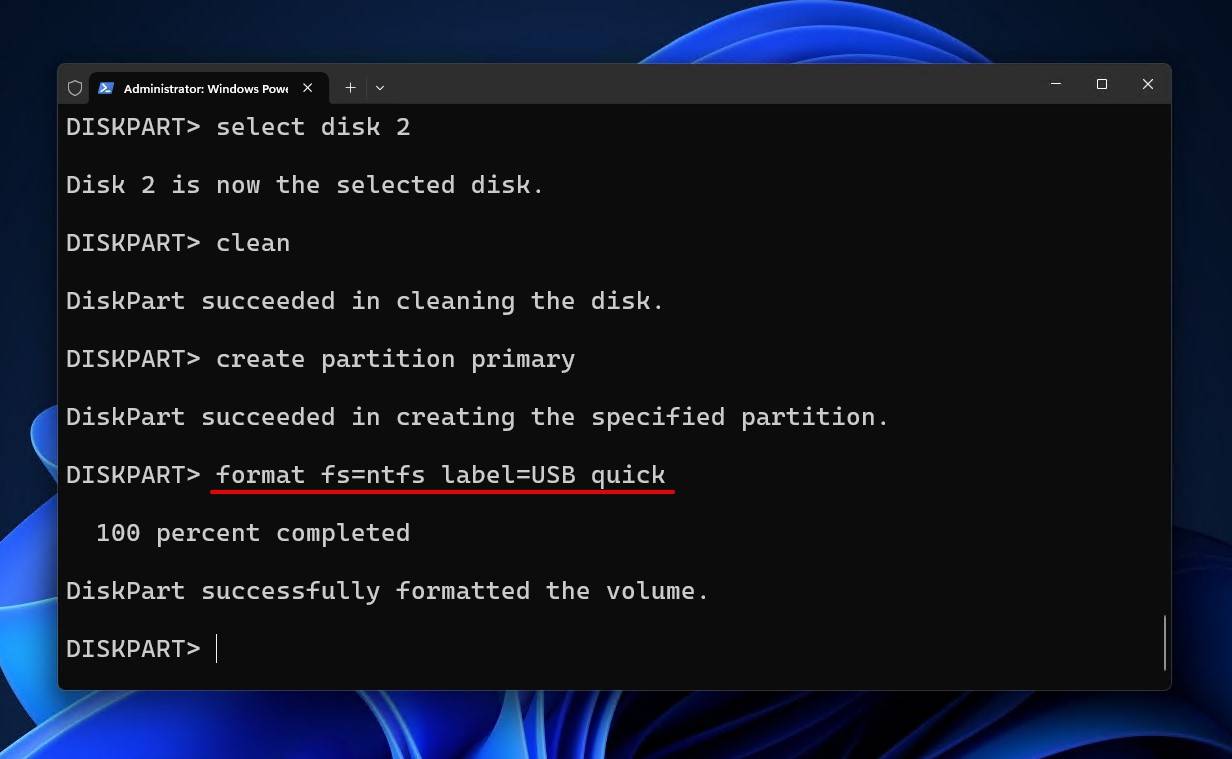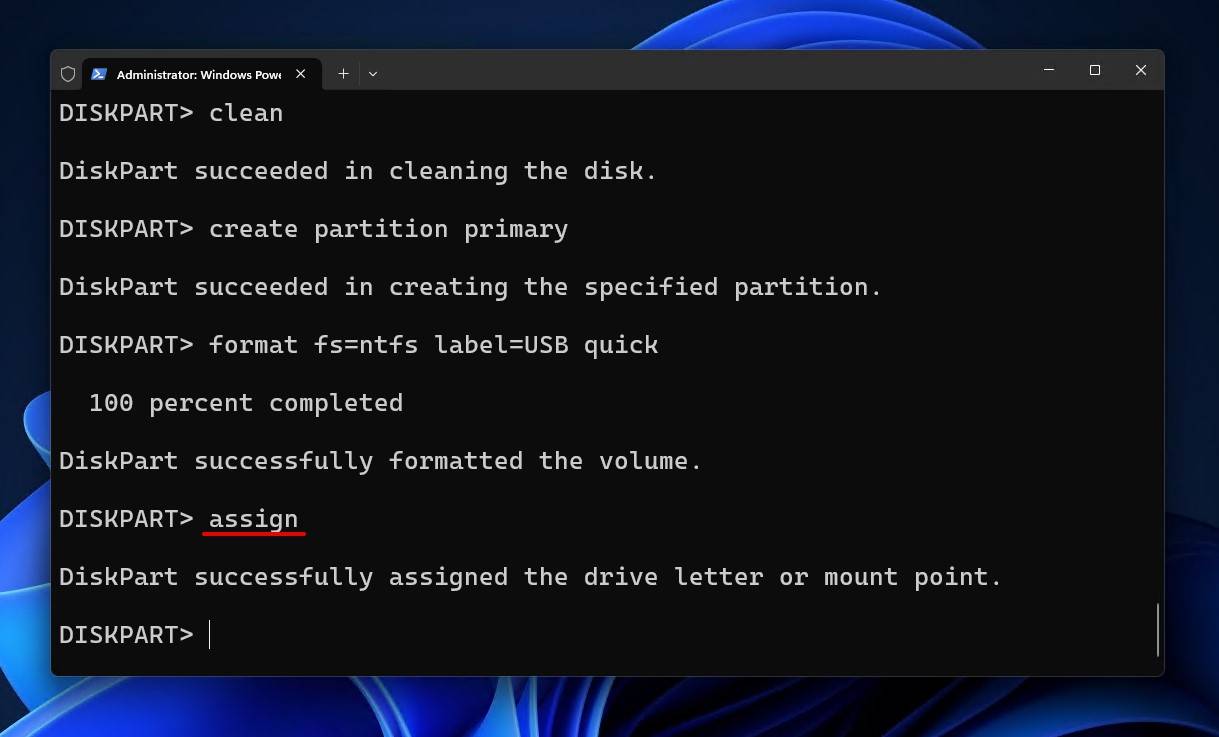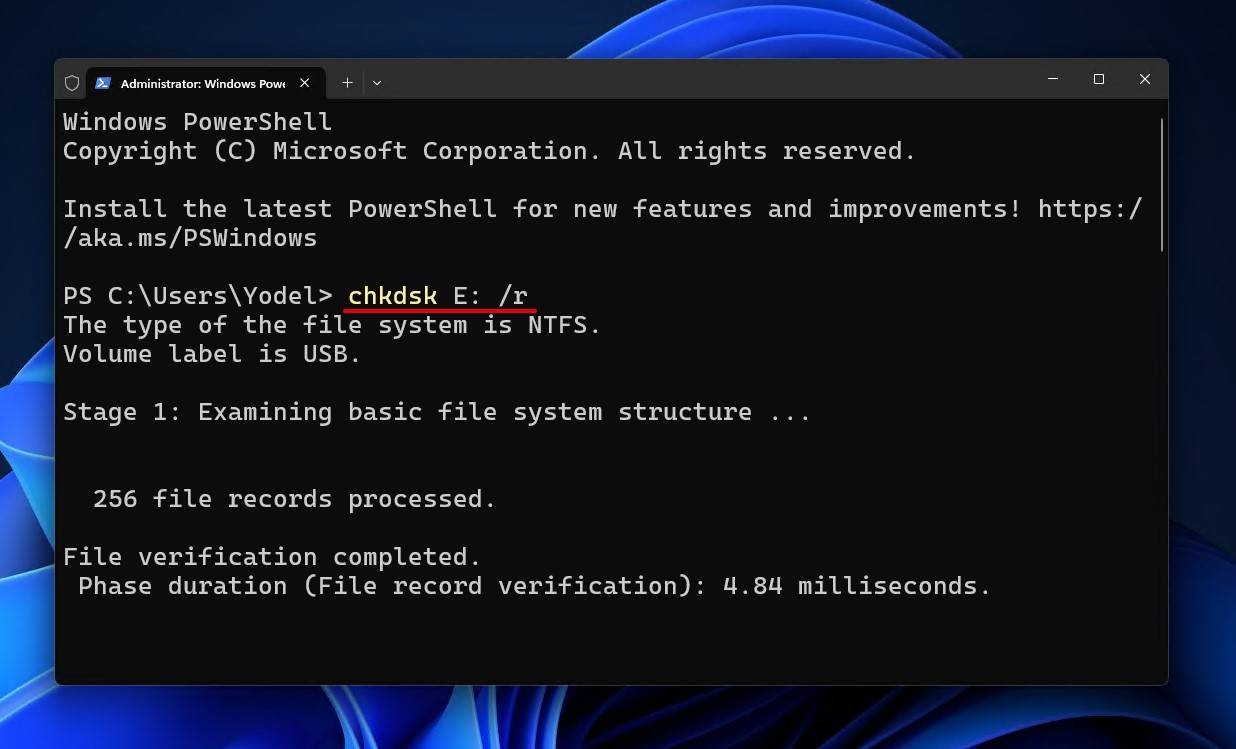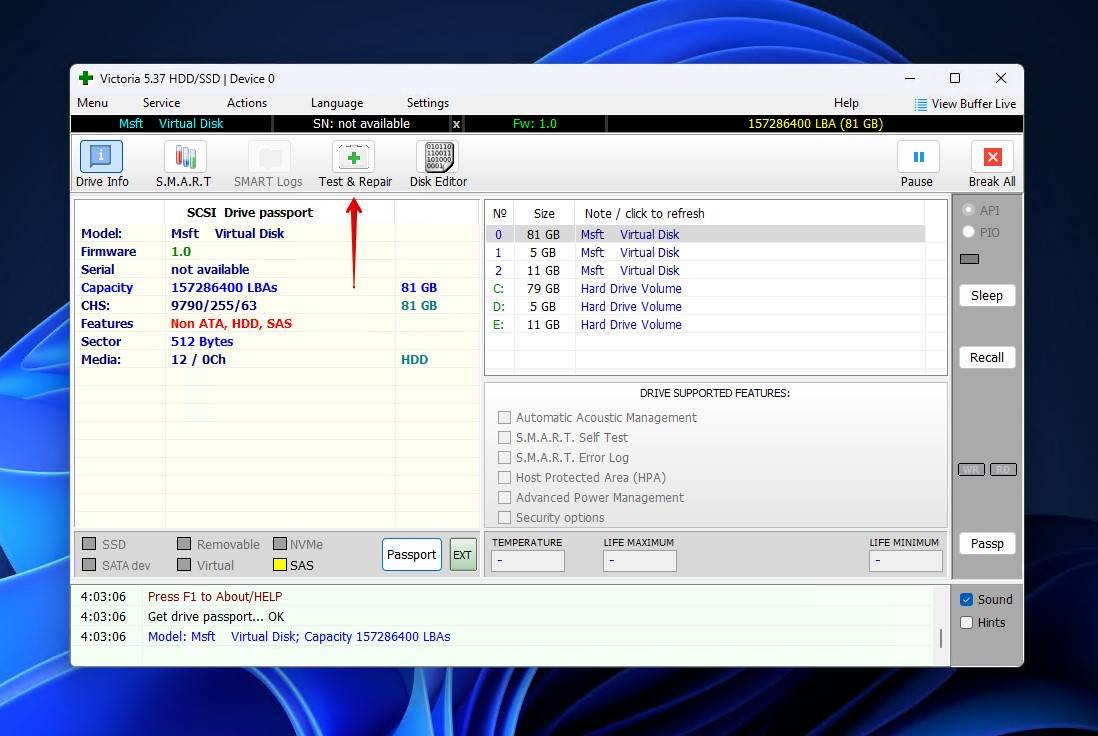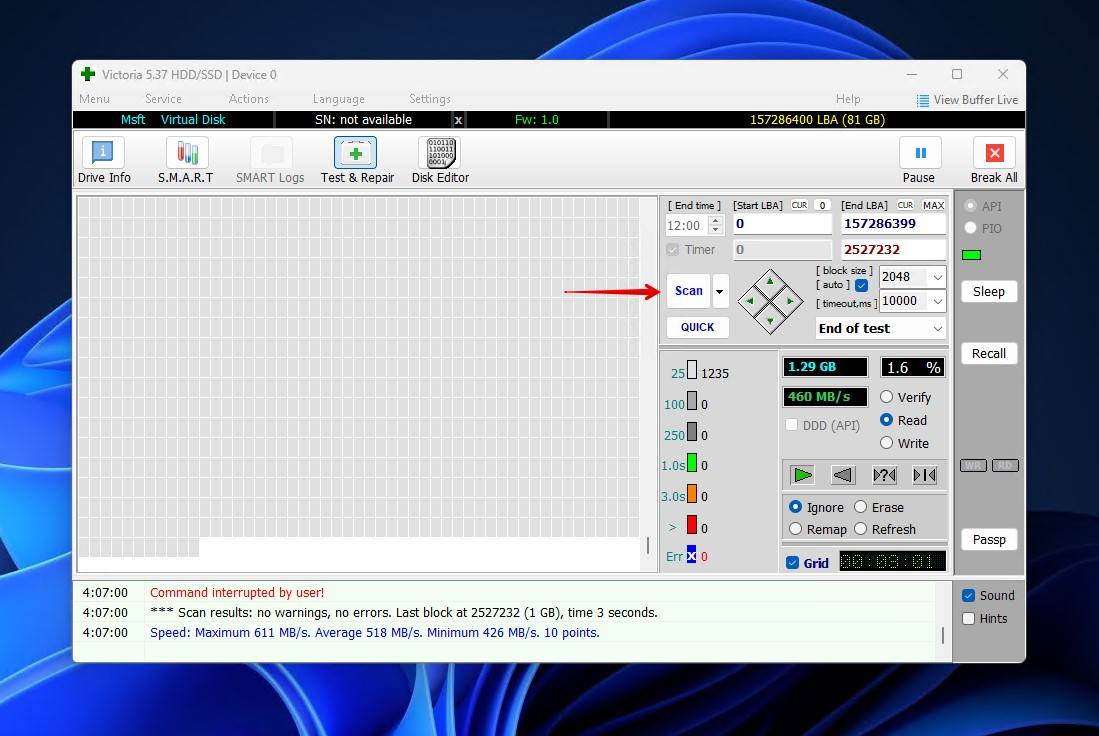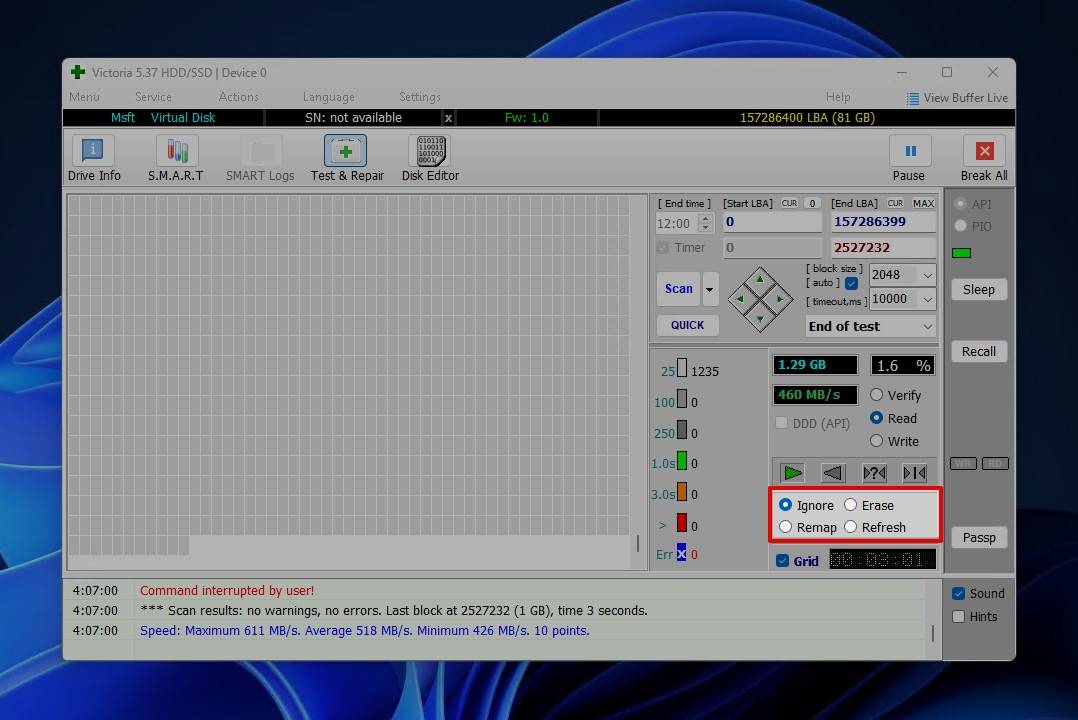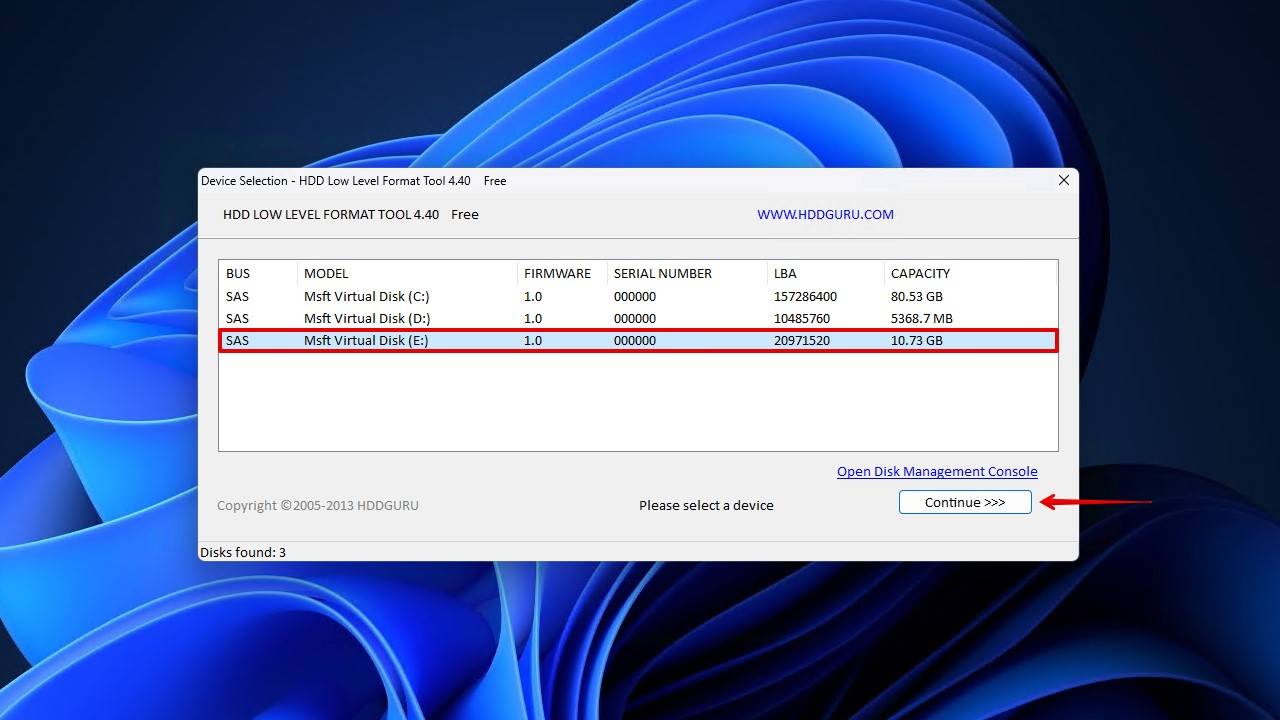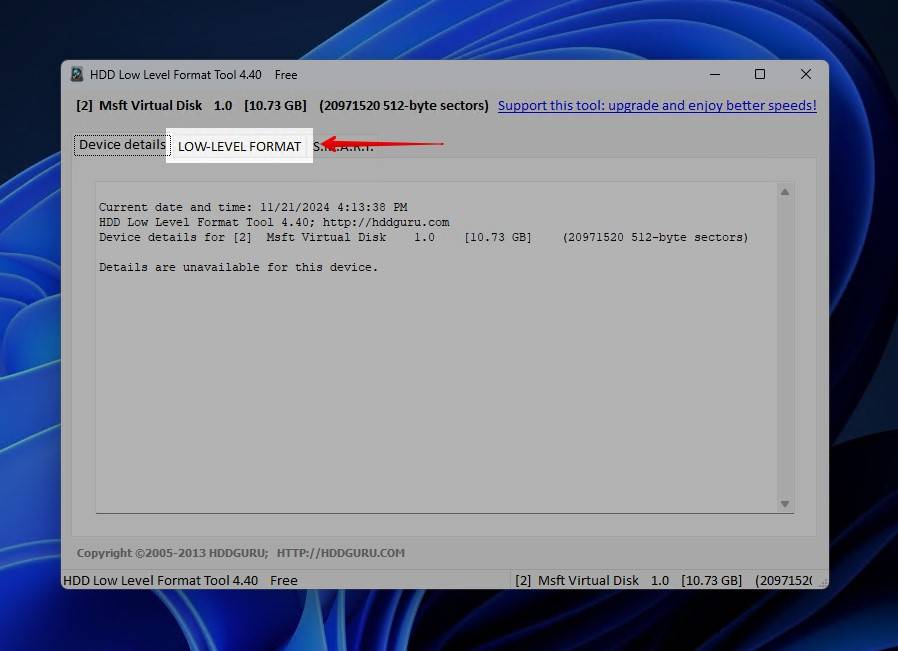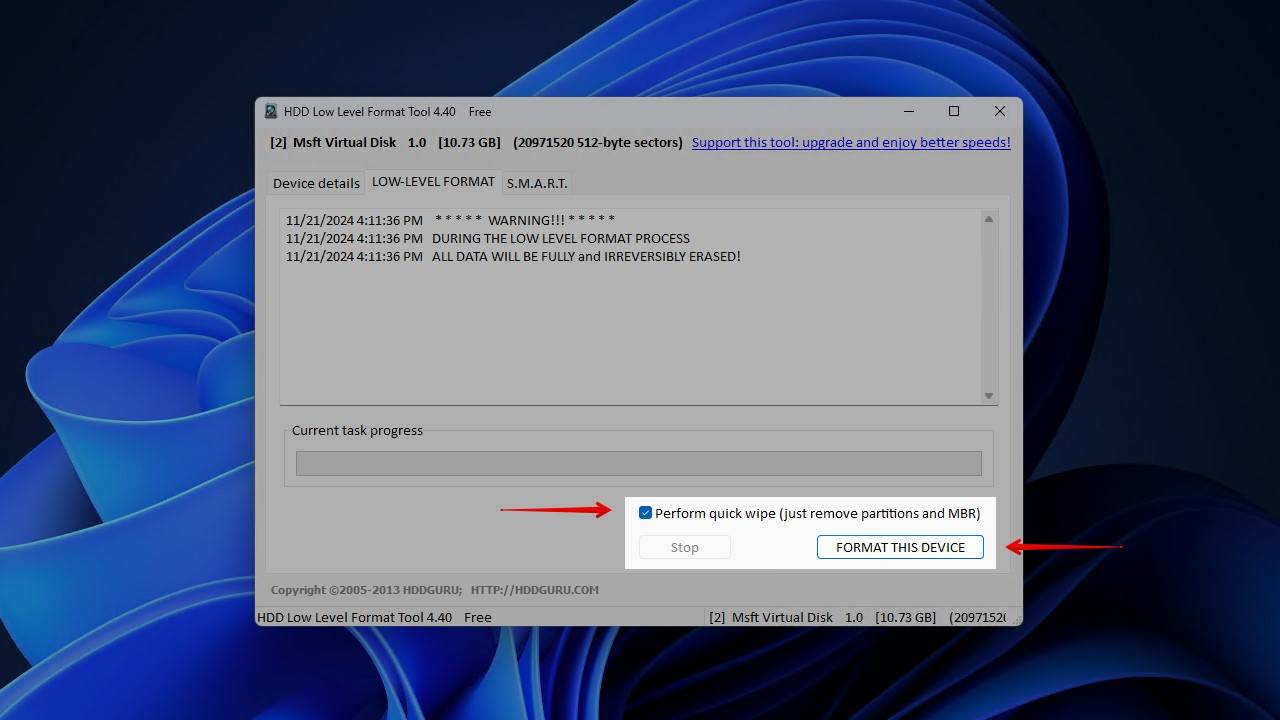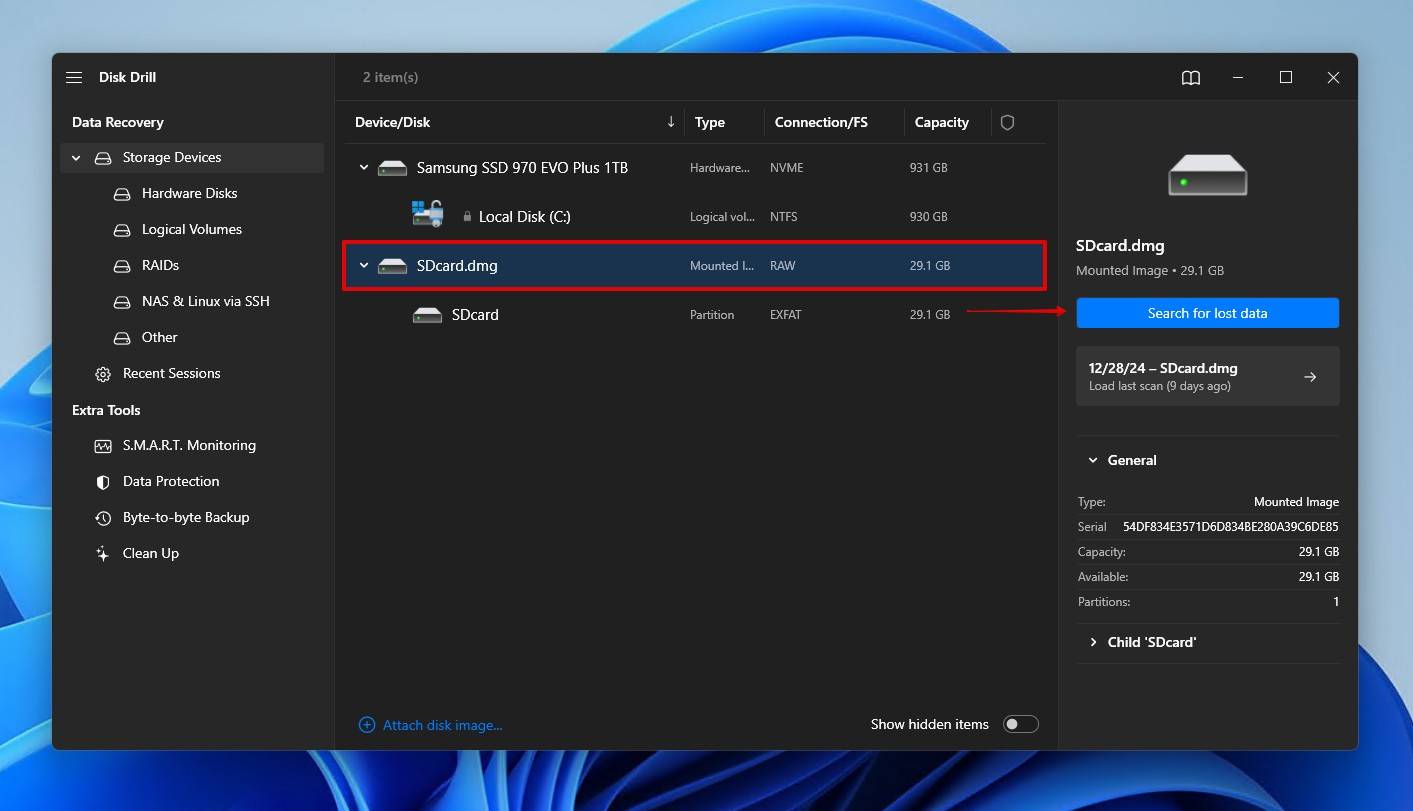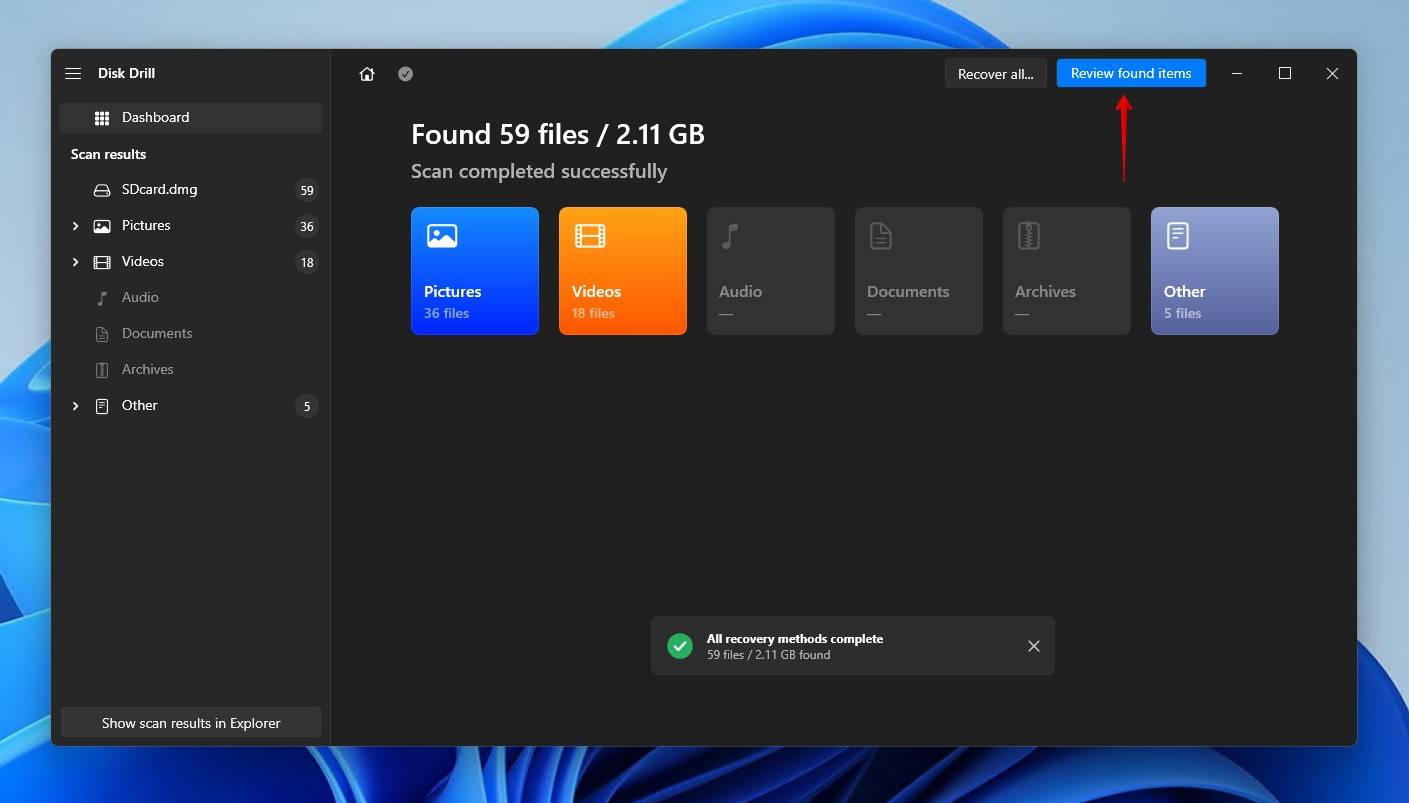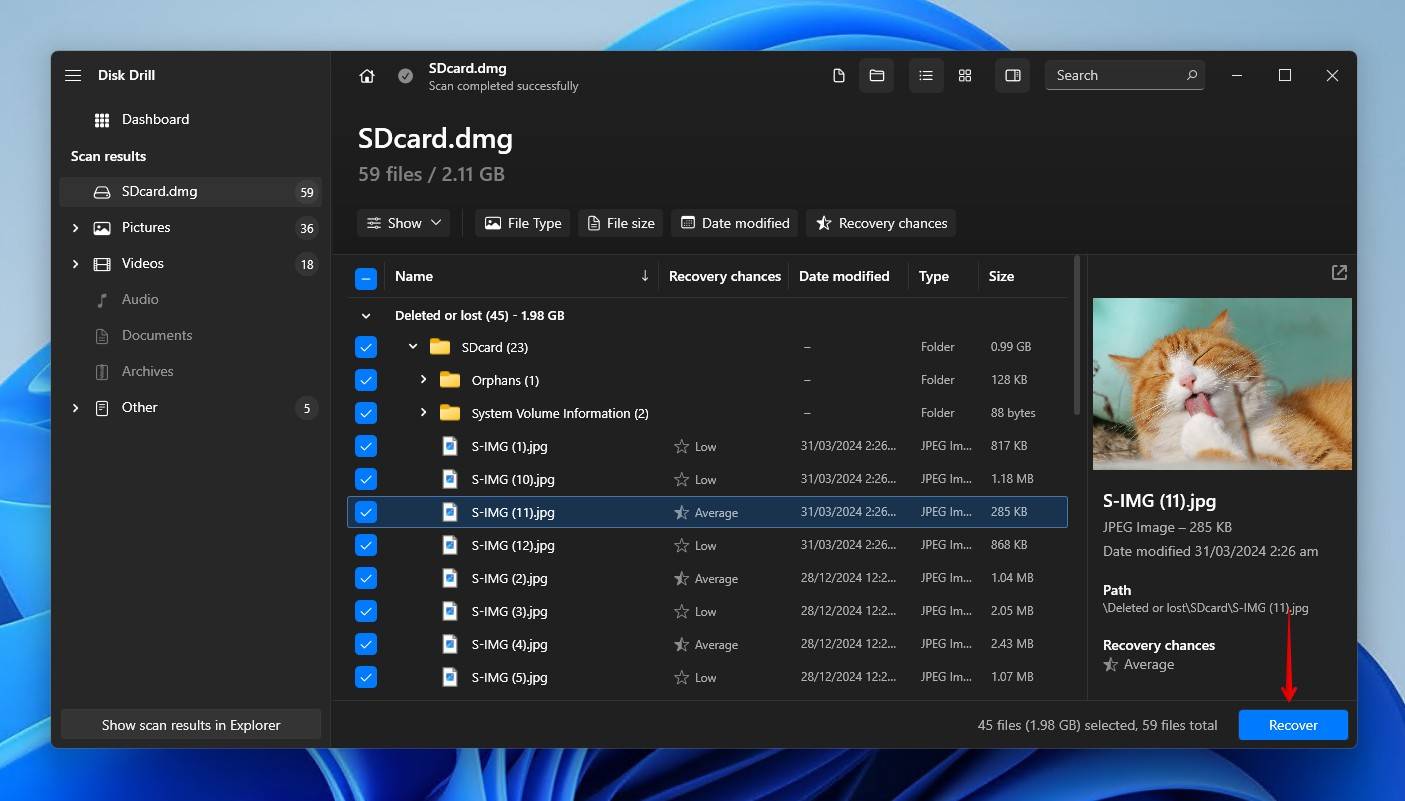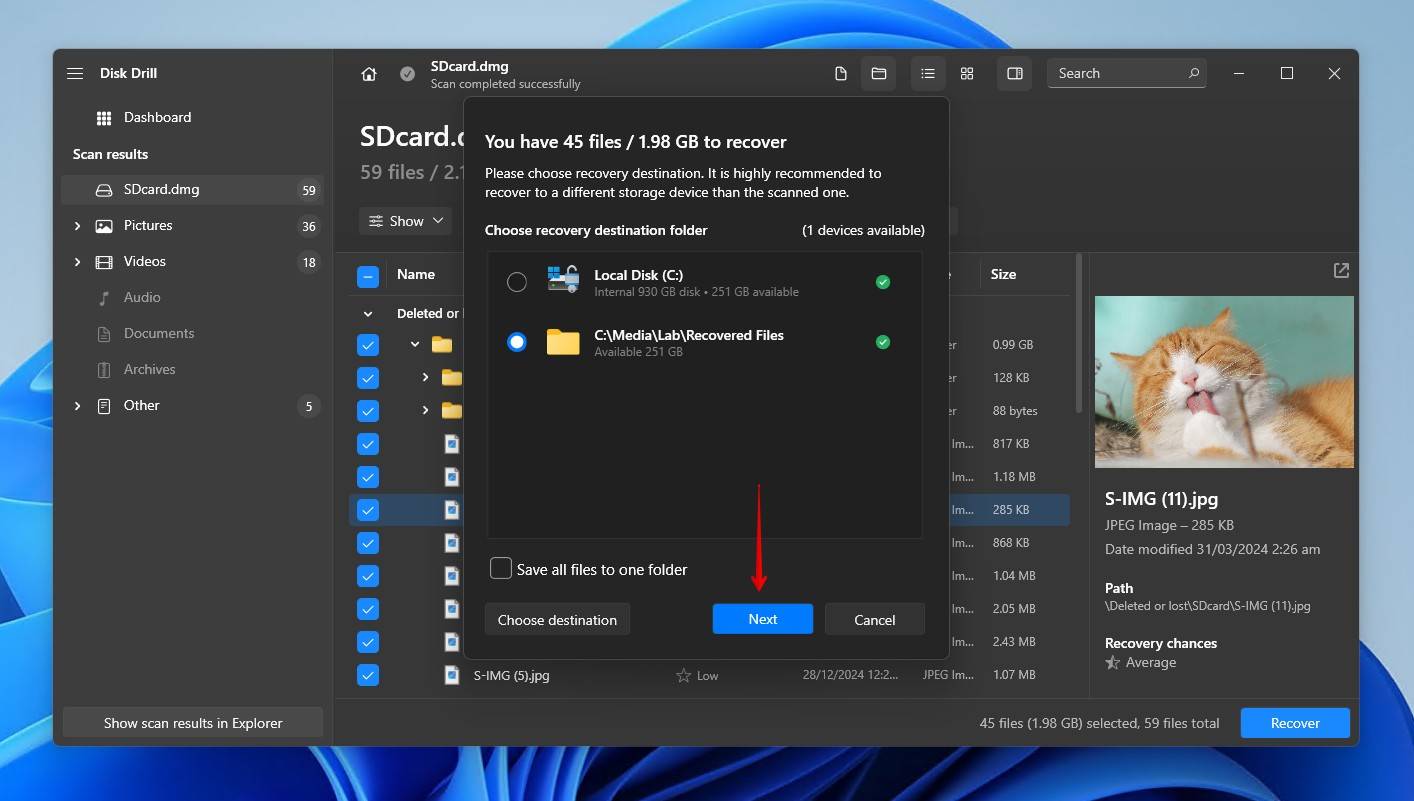Одна из частых проблем при форматировании карт памяти SD и MicroSD, а также USB флешки — сообщение об ошибке «Windows не удается завершить форматирование», при этом, как правило ошибка появляется вне зависимости от того, в какой файловой системе выполняется форматирование — FAT32, NTFS, exFAT или другой.
В большинстве случаев проблема возникает после того, как карта памяти или флешка была извлечена из какого-то устройства (фотоаппарат, телефон, планшет и подобного), при использовании программ для работы с разделами дисков, в случаях внезапного отключения накопителя от компьютера во время выполнения операций с ним, при сбоях в питании или же при использовании накопителя какими-либо программами.
В этой инструкции — подробно о различных способах исправить ошибку «не удается завершить форматирование» в Windows 10, 8 и Windows 7 и вернуть возможность очистки и использования флешки или карты памяти.
Полное форматирование флешки или карты памяти в управлении дисками Windows
Прежде всего при возникновении ошибок с форматированием рекомендую попробовать два самых простых и безопасных, но не всегда работающих способа с использованием встроенной утилиты Windows «Управление дисками».
- Запустите «Управление дисками», для этого нажмите Win+R на клавиатуре и введите diskmgmt.msc
- В списке накопителей выберите вашу флешку или карту памяти, нажмите по ней правой кнопкой мыши и выберите «Форматировать».
- Рекомендую выбрать формат FAT32 и обязательно снимите отметку «Быстрое форматирование» (хотя процесс форматирования в данном случае может занять продолжительное время).
Возможно, в этот раз USB накопитель или карта SD будут отформатированы без ошибок (но не исключено, что снова появится сообщение о том, что системе не удается завершить форматирование). См. также: Чем отличается быстрое и полное форматирование.
Примечание: используя Управление дисками обратите внимание на то, как ваша флешка или карта памяти отображается в нижней части окна
Форматирование накопителя в безопасном режиме
Иногда проблема с невозможностью завершить форматирование бывает вызвана тем, что в работающей системе накопитель «занят» антивирусом, службами Windows или какими-либо программами. В этой ситуации помогает форматирование в безопасном режиме.
- Загрузите компьютер в безопасном режиме (Как запустить безопасный режим Windows 10, Безопасный режим Windows 7)
- Отформатируйте флешку или карту памяти с помощью стандартных средств системы или в управлении дисками, как это было описано выше.
Также вы можете загрузить «безопасный режим с поддержкой командной строки» а затем использовать её для форматирования накопителя:
format E: /FS:FAT32 /Q (где E: — буква накопителя который нужно отформатировать).
Очистка и форматирование USB накопителя или карты памяти в DISKPART
Способ с использованием DISKPART для очистки диска может помочь в тех случаях, когда на флешке или карте памяти была испорчена структура разделов или же какое-то устройство, к которому был подключен накопитель создало разделы на нем (в Windows могут быть проблемы, если на съемном накопителе есть несколько разделов).
- Запустите командную строку от имени администратора (как это сделать), затем по порядку используйте следующие команды.
- diskpart
- list disk (в результате выполнения этой команды запомните номер накопителя, который нужно отформатировать, далее — N)
- select disk N
- clean
- create partition primary
- format fs=fat32 quick (или fs=ntfs quick)
- Если после выполнения команды под пунктом 7 по завершении форматирования накопитель не появится в проводнике Windows, используйте пункт 9, иначе пропустите его.
- assign letter=Z (где Z — желаемая буква флешки или карты памяти).
- exit
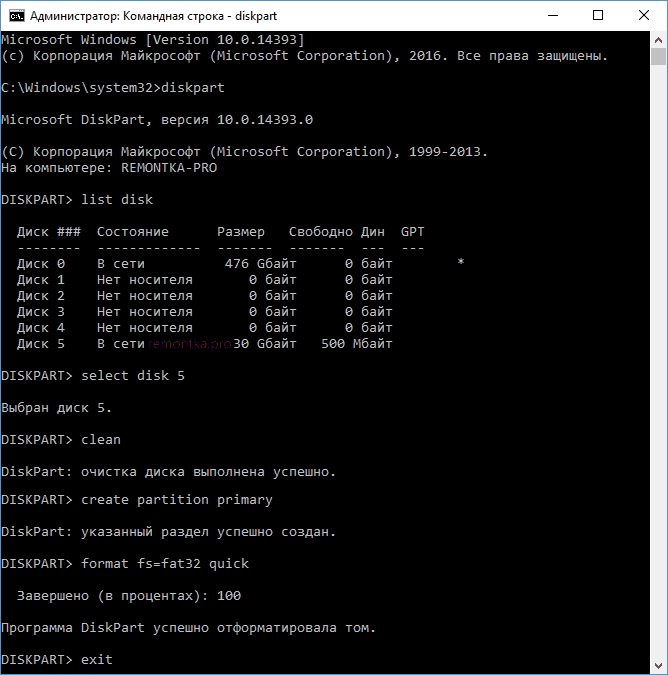
После этого можно закрыть командную строку. Подробнее на тему: Как удалить разделы с флешки.
Если флешка или карта памяти все так же не форматируются
Если ни один из предлагаемых способов не помог, это может говорить о том, что накопитель вышел из строя (но не обязательно). В этом случае можно попробовать следующие инструменты, есть вероятность, что они смогут помочь (но в теории могут и усугубить ситуацию):
- Специальные программы для «ремонта» флешек
- Также могут помочь статьи: Карта памяти или флешка защищена от записи, Как отформатировать флешку, защищенную от записи
- HDDGURU Low Level Format Tool (низкоуровневое форматирование флешки)
На этом завершаю и надеюсь, что проблема связанная с тем, что Windows не удается завершить форматирование была решена.
This page explains the causes of «Windows was unable to complete the format» error and covers 5 practical ways to help all Windows users to get rid of this error efficiently from USB flash drive, SD card, external hard drive, etc., devices. If you were unable to format the USB or SD card, relax and follow guidelines here to complete the format with ease now.
Formatting a Micro SD card, USB flash drive, pen drive, hard drive or SSD is a quick process for ordinary users to change the device file system and restore its full capacity, and it’s not strange to most of us. But sometimes, you might fail to complete the format on a Windows computer as the cases shown below:
Case 1 — Windows cannot complete format on USB
«Yesterday, Windows asked me to format my USB flash drive when I connected it to the computer. But I just got an error message ‘Windows was unable to complete the format’ when I tried to reformat it to FAT32. How can I fix this problem?»
Case 2 — Windows was unable to complete the format on the SD card
«I have a problem with my micro SD card. I can’t format it. I receive an error ‘Windows was unable to complete the format’, what can I do?»
So what is unable to complete the format? «Windows was unable to complete the format» is an error message that pops up in a window to warn users the Windows operating system cannot execute the formatting operation on your target devices so as to change the file system, setting the problematic device to usable again.
Stay calm when you are unable to complete formatting SD card, USB, external hard drive, or other devices on Windows PC. You should first check the causes of this error. Then you can follow the respective fix and refer to the guide steps remove the «Windows was unable to complete the format» issue from your device, completing the format.
For an instant solution for the ‘Windows was unable to complete the format’ issue, you can fully reply on the professional formatting tool — EaseUS Partition Master as shown below in Method 1 for help.
Causes of Windows Unable to Complete Format Error
There are many causes that may prevent Windows from completing the format process on your devices. Here is a list of the main reasons that explain why Windows is unable to format the USB, SD card, or external hard drive, etc., devices:
#1. The device contains the file system error
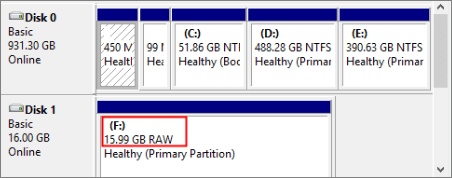
When a storage device displays as RAW or contains an unsupported file system such as Linux Ext2/3/4, Windows won’t be able to directly format the device by using File Explorer or Disk Management. To fix this error, you will need a third-party formatting tool for help.
#2. Presence of bad sectors on USB, SD
When a storage device contains a certain number of bad sectors, you won’t be able to format it using Windows built-in tools. To make your device accessible again and complete the format on a USB/SD card, you can run disk error checking and a bad sector repair tool to clear the errors on your device.
#3. Virus or malware infection
When your storage device is infected by a virus or malware, you can neither access the saved data nor format the device in a normal way. You need to clear the virus at first and then complete the formatting process.
#4.The device is locked or write-protected by third-party software
If your USB or SD card gets locked or write-protected by third-party software, you cannot format the device either. The only way out is to remove the write protection first, and then finish formatting your SD, or USB drive.
#5. Physical damage
When your storage device is physically damaged, you can do nothing to it. Either taking it to a local manual repair center or purchasing a new one to replace the damaged device is a good way out.
7 Fixes for «Windows Was Unable to Complete the Format» Error
In part, we will show you how to fix the ‘Windows was unable to complete the format’ error in 6+ practical ways. As the causes are different, the solutions may also be different. Check and follow the right solution to get rid of this error with ease now.
Method 1. Use EaseUS Partition Master
Applies to: Fix «Windows was unable to complete the format» caused by a file system error or unsupported file system on USB, SD card, hard drive, etc.
If your storage devices cannot be formatted due to file system error, such as USB shows RAW in Disk Management, EaseUS Partition Master can effectively format your device to a Windows supported file system such as NTFS, FAT32, or exFAT, etc., with ease.
Follow to see how to fix file system errors on your SD, or USB drive using this software and complete the formatting process in only a few simple clicks:
Step 1. Run EaseUS Partition Master, right-click the hard drive partition you intend to format and choose «Format».
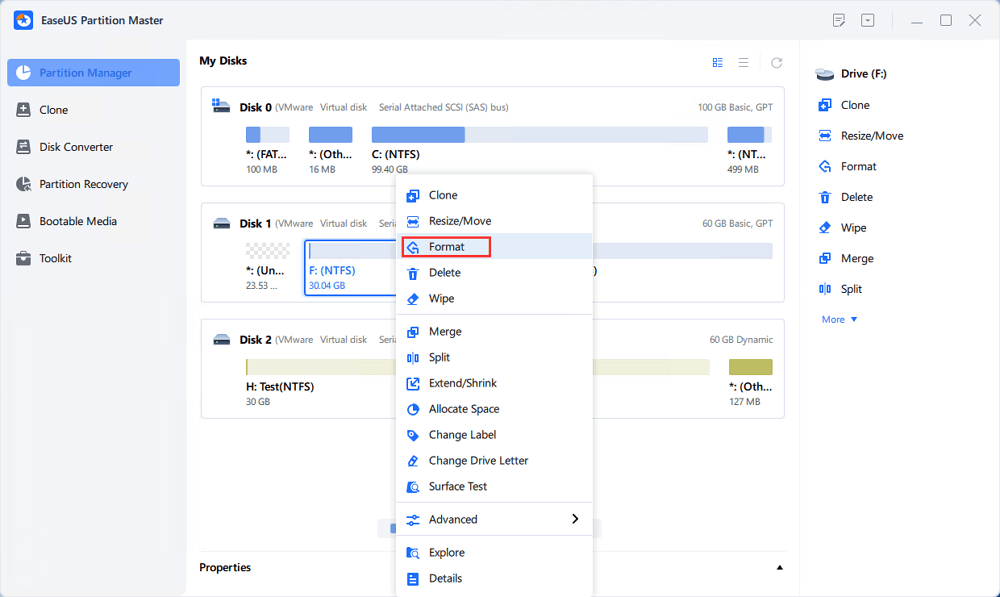
Step 2. In the new window, set the Partition label, File system (NTFS/FAT32/EXT2/EXT3/EXT4/exFAT), and Cluster size for the partition to be formatted, then click «OK».
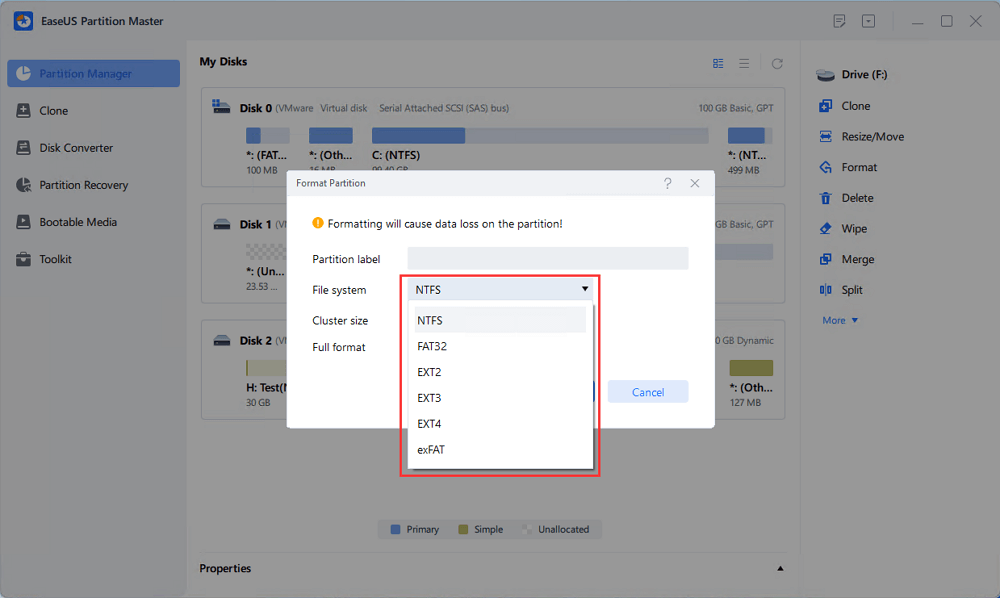
Step 3. Then you will see a warning window, click «Yes» in it to continue.
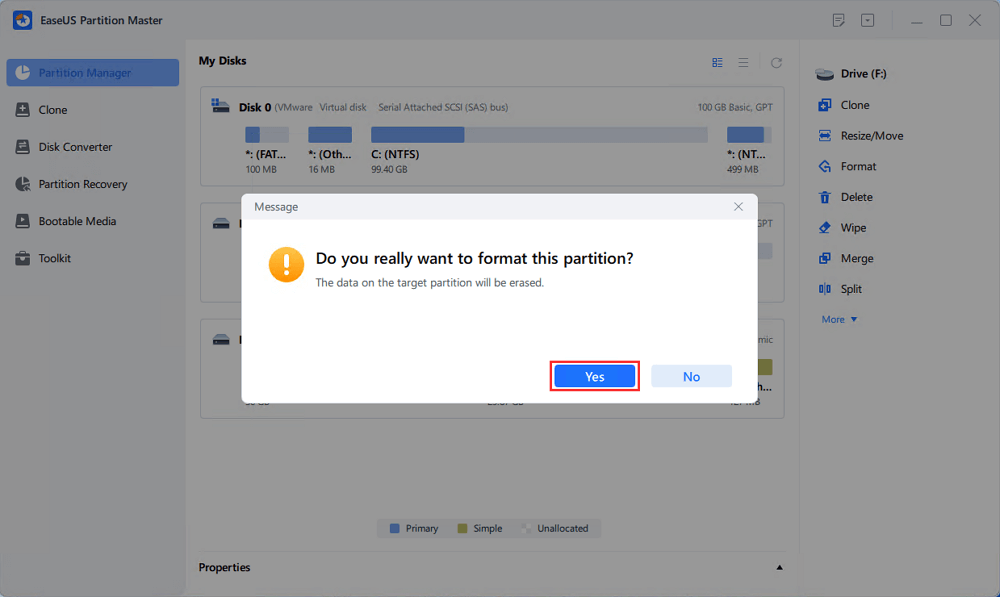
Step 4. Click the «Execute 1 Task(s)» button to review the changes, then click «Apply» to start formatting the partition on your hard drive.
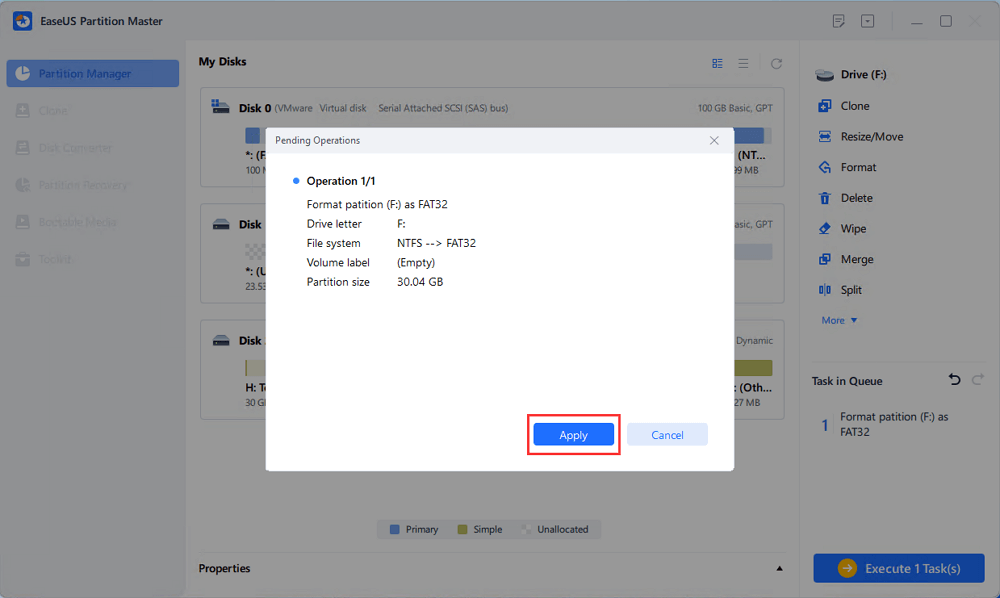
Do you like using this powerful tool to fix Windows was unable to format error? If you think it’s helpful, click the buttons below to share it with other people in need!
Method 2. Use Diskpart Command
Applies to: Resolve Windows unable to format USB, SD, or other device error due to file system or bad sector issue.
When you failed to format USB, SD card, or other storage devices using Windows file explorer, the Diskpart formatting command can also help you complete the format.
Here are the steps:
Step 1. Right-clicking on Windows icon, type command prompt in Search, right-click on Command Prompt and select «Run as administrator».
Step 2. Type diskpart in Command Prompt and hit Enter.
Step 3. Hit Enter each time when you type below command lines in DiskPart to quick format hard drive:
- list disk
- select disk 2 (Replace 2 with your disk number)
- list volume
- select volume 10 (Replace 10 with the volume number of the device that you want to format)
- format fs=ntfs quick (If you need to format a storage device to FAT32 or other file systems, replace NTFS with FAT32, exFAT, etc.)
Step 4. Type exit and hit Enter to close the program when DiskPart reports it has successfully formatted the volume.
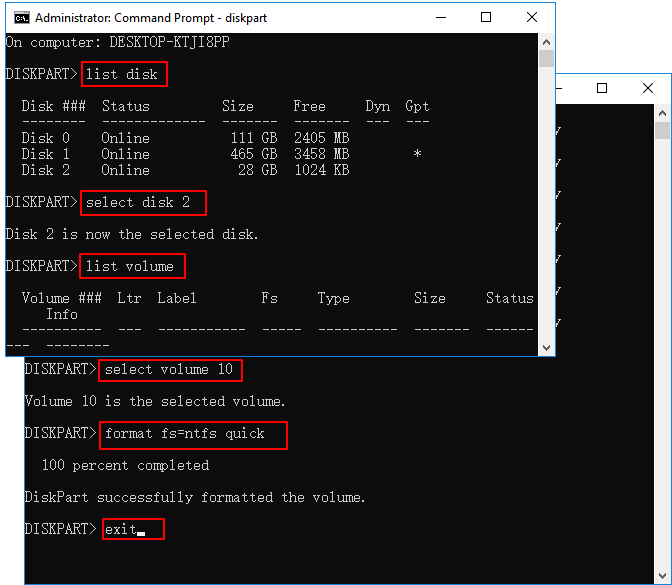
To learn more details about how to use CMD, click the video below to try.
Method 3. Use Disk Management
Applies to: Get rid of «Windows was unable to complete the format» error caused by RAW file system error on USB, SD card, hard drive, etc.
When your storage device becomes RAW and Windows warns that it was unable to complete the format, you may try Windows Disk Management to complete the formatting:
Step 1. Connect your device to your PC if you want to format a removable device.
Step 2. Right-click on This PC and click «Manage», and select «Disk Management».
Step 3. Locate and right-click on your USB flash drive or external hard drive, and then select «Format».
Step 4. Set the file system of your USB, SD card, or hard drive to NTFS or FAT32, tick «Quick Format» and click «OK» to confirm.
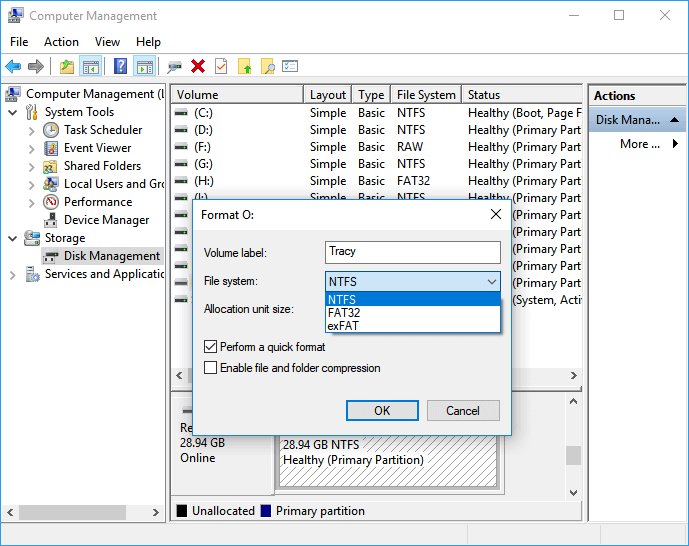
Method 4. Clear Virus
Applies to: Resolve «Windows was unable to complete the format» issue on a locked device due to virus or malware infection.
If your device is locked or infected by viruses or unknown malware, your Windows computer won’t be able to format your USB, SD card, or other storage devices. The best way to get rid of this issue is to run virus-cleaning software and unlock the device.
If you are not familiar with antivirus software, TotalAV is one of the utilities that you can try. It enables you to protect your data and privacy against from virus, malware, and online threats in real-time:
TOTALAV
TotalAV is an Award Winning Antivirus and Security Software. It Provides Real-Time Protection from Viruses, Malware & Online Threats.
Step 1. Connect your external storage device like USB or SD card to your PC.
Step 2. Run a virus cleaner, malware removal tool, or antivirus software on your PC, select the target device to clear the existing virus, malware.
Step 3. After this, you can reformat the device again using Windows File Explorer or the former three formatting tools.
You can also remove virus without antivirus by using Windows Defender and enable the real-time virus protection feature. It also works to protect your device and data against viruses and malware infection.
Method 5. Remove Write Protection from Device
Applies to: Remove write protection and enable Windows to complete the format on USB, SD card, external hard drive, etc., devices.
If your target device is locked or write-protected by a password or third-party software, Windows cannot directly format your storage device. You will need to unlock the device first, and then complete the format:
First. Remove Device Write Protection — 3 Ways
#1. Unlock USB/SD card
Step 1. Connect your device to your PC.
Step 2. Remove the switch of your USB or SD card to the OFF side.
Then you can retry to format the device on Windows using File Explorer or other devices.
#2. Remove write protection from USB/SD
Here is a write protection removal tool named EaseUS CleanGenius for you to apply and directly remove the write protection from your device:
If you don’t consider yourself a pro-computer user and you’re not familiar with command-lines, don’t worry. There are graphical-based solutions to help you remove write-protection from your hard drives, USB drives, and even SD cards.
EaseUS CleanGenius is one of these tools that helps you fix aforementioned issues on your drives without knowing a thing about command-line.
Here’s an easy-to-follow guide on how to use this tool to get your issues sorted:
Step 1: DOWNLOAD and install EaseUS CleanGenius (free) on your computer.
Step 2: Run EaseUS CleanGenius on your PC, select Optimization and choose the Write Protection mode.
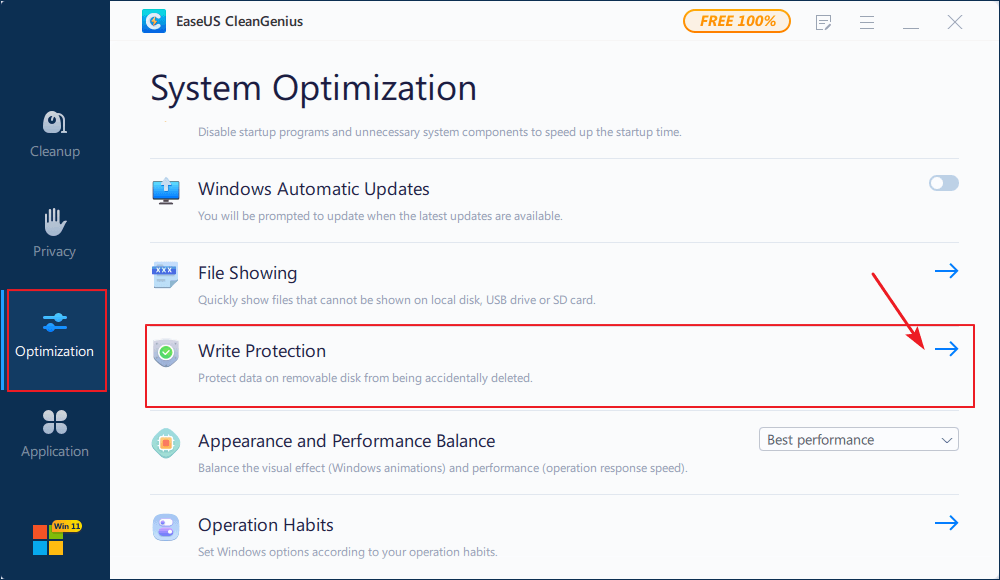
Step 3: Select the device that is write-protected and click Disable to remove the protection.
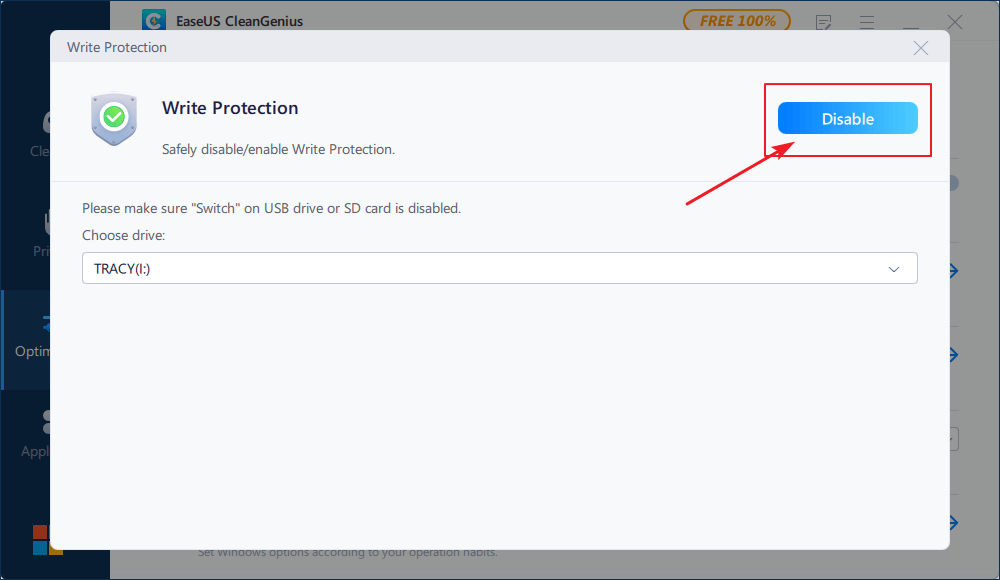
#3. Unlock device using a password or third-party software
If your storage device is write-protected by using a password or third-party software, you will need to reuse the password or the software to unlock your SD, USB, etc., devices.
Next. Format the Device — Complete Windows Formatting
Now, you can reformat the device with Windows File Explorer, Disk Management, Diskpart command, or EaseUS Partition Master.
Step 1. Connect USB, or SD card that you want to format to your PC and open up Windows Explorer.
Step 2. Right-click on the connected device and select «Format».
Step 3. On the format window, select the desired file system — NTFS for hard drive partition, FAT32 for 32GB SD/USB, and exFAT for 64GB or bigger SD/USB.
Step 4. Tick «Quick format» and click «Start».
Method 6. Check and Fix Disk Errors that Prevent Windows from Completing the Format
Applies to: Resolve «Windows unable to format» device error due to disk error.
Step 1. Open File Explorer, connect your device to PC and right-click on the problematic device, select «Properties».
Step 2. Under the Tools tab, click the Check button under «Error checking».
Step 3. Next, you can choose to Scan drive if wanted or Repair drive if errors were found.
Wait for the process to finish.
Step 4. Now, you can right-click on your device and complete the format using Windows File Explorer.
Method 7. Repair Bad Sector that Disallows Windows to Format Storage Device
Applies to: Fix and repair soft bad sectors that stops Windows from formatting device.
When a storage device contains a bit few soft bad sectors, you can’t format it using the Windows formatting tool. You can either apply EaseUS Partition Master with its File System Checker to repair bad sectors or run CMD command to repair soft bad sector first and then complete the format:
Step 1. Run CHKDSK command to fix soft bad sectors.
1. Type cmd in the Search box, right-click «Command Prompt» and choose «Run as administrator».
2. Type chkdsk E: /f /r /x and hit Enter. (Replace E with the drive letter of your storage device.)
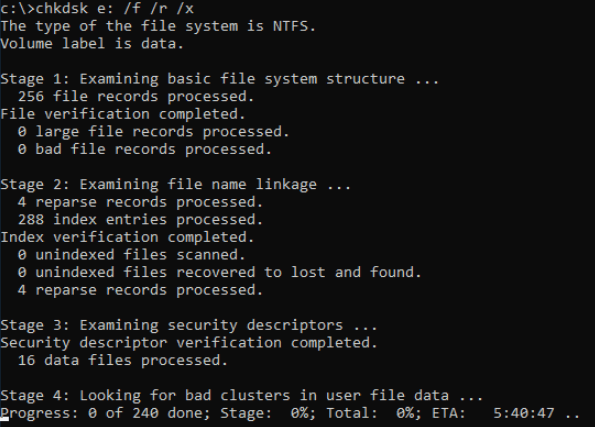
Step 2. Format storage device to usable again
1. Open Windows File Explorer, locate and right-click on your hard drive.
2. Select «Format», reset the file system as NTFS, tick «Quick Format» and click «Start».
Bonus Tip: Recover Lost Data after Completing Windows Format
Applies to: Restore lost data from a faulty storage device after resolving the «Windows cannot complete the format» error and formatting the device.
When you finish formatting the faulty storage device which Windows was unable to format, you may lose the saved data. The only thing that you can do is to turn to reliable data recovery software and restore precious data immediately.
Here, we would like to recommend you try EaseUS Data Recovery Wizard. It supports to scan and restore all your data in only 3 steps as long as the device can be detected by a Windows computer:
Step 1. Run EaseUS Data Recovery Wizard. Choose the drive where you lost files and start scanning by clicking «Search for Lost Data». This software allows you to recover lost data from all devices, including HDD, SSD, USB drive, SD card, pen drive, camera, etc.
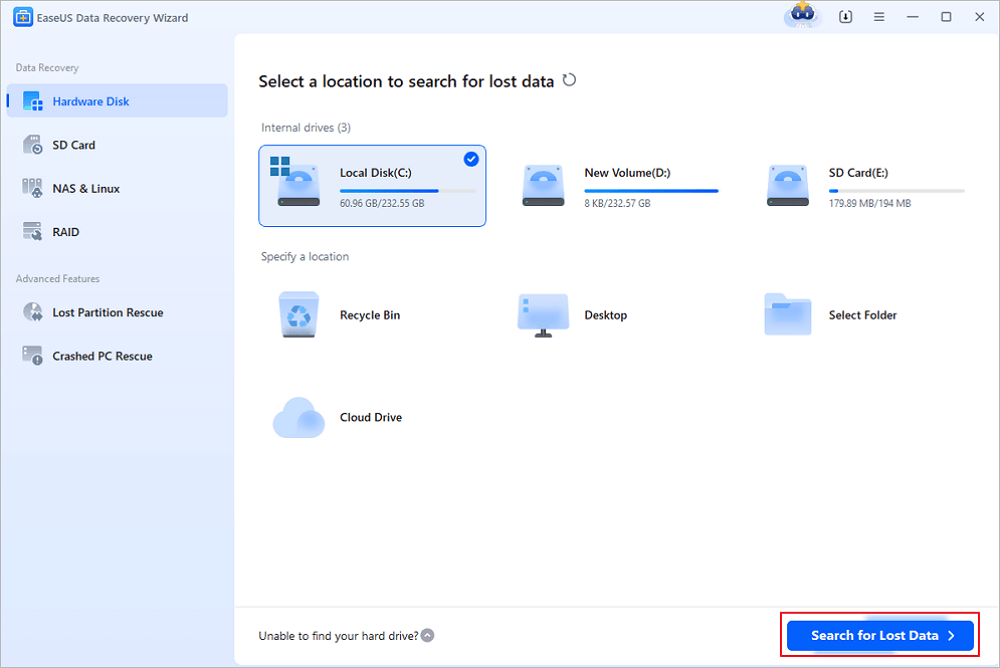
Step 2. Browse the full scan results. You can choose the file type you need by clicking on the file type filter. EaseUS data recovery software supports 1000+ file types like photos, videos, documents, emails, audio files, and many more.
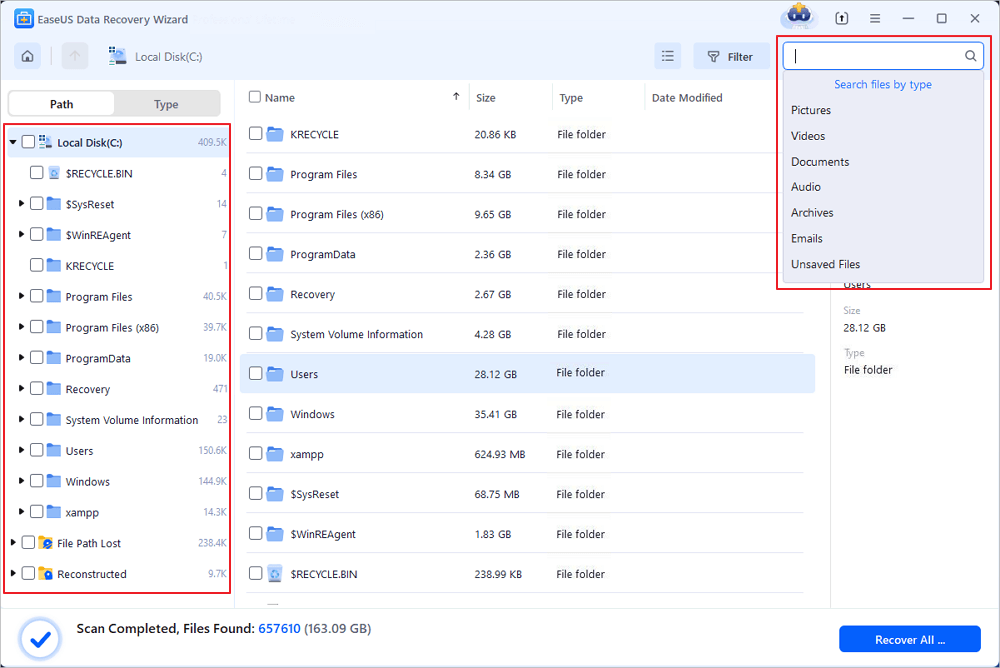
Step 3. Select the files you want to preview. Click «Recover» and set a storage location or Cloud drive to save the recovered data.
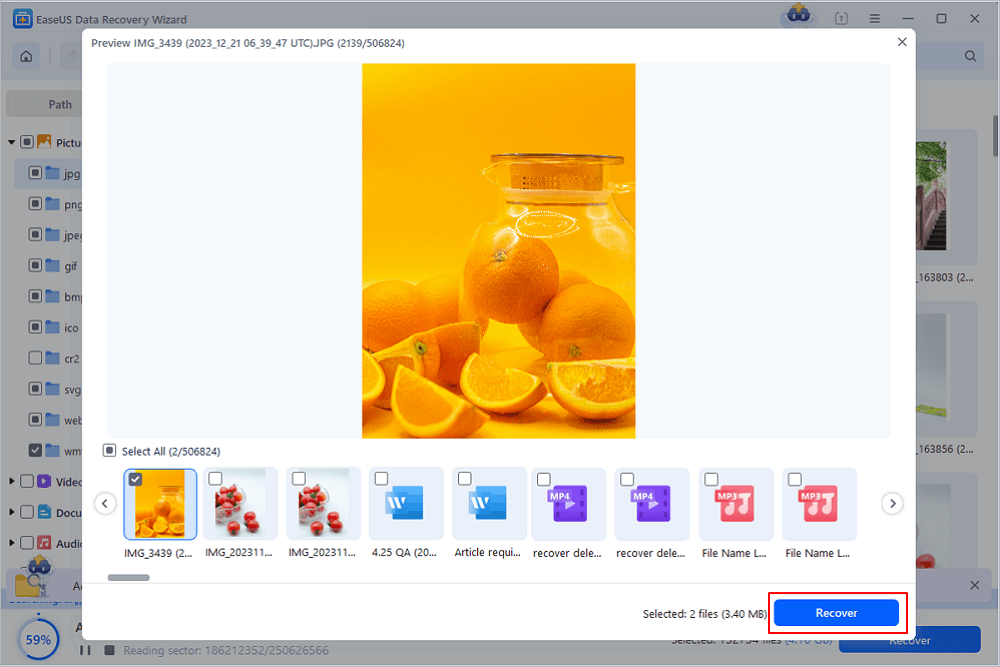
After restoring the precious data, you can re-save your data back to the USB or SD card again.
Conclusion
This page answers the question of «How do I fix Windows was unable to complete the format?» with 7 to help you effectively resolve this issue on your USB, SD card, external or internal hard drive.
For a reliable and effective formatting software, EaseUS Partition Master is recommended for you to try. It makes everything easy for you to format the device in Windows PC. If you have other advanced partitioning requests, it also can help.
FAQs about Formatting Hard Drive
If you have other more questions in formatting devices, check and find answers in the following FAQs:
1. How do I fix a hard drive that won’t format?
First, you need to check the hard drive state: whether Windows can detect the hard drive.
If yes, apply EaseUS Partition Master to directly format your hard drive with provided steps in Method 1 on this page.
If not, or your hard drive displays as unknown or unallocated, create a new partition on your hard drive and reformat the hard drive.
2. Why can’t I format my hard drive?
As described on this page, when your hard drive gets locked, damaged, or contains file system error, bad sectors, or even virus-infected, you can’t directly format it.
To resolve this issue, you can try the three methods:
1). Unlock hard drive using password or third-party software;
2). Clean up virus and malware from the hard drive;
3). Format hard drive using EaseUS Partition Master, Diskpart, or Disk Management formatting tool.
For more details, follow the provided methods on this page for a guide.
3. How do I fix my flash drive unable to format?
When you are unable to format a flash drive, try the following steps:
Step 1. Connect the flash drive to the PC and unlock the USB if it’s locked.
Step 2. Run virus cleaner software to remove hidden viruses, malware.
Step 3. Run Windows Disk Management or EaseUS Partition Master
Step 4. Right-click the USB flash drive and select «Format». Set a new file system for the drive.
Step 5. Reset the file system for the flash drive and click «OK» to confirm.
After this, you can reuse the flash drive to transfer data and save files again.
Position: How Tos — Disk Utilities — Fix «Windows Was Unable to Complete the Format» in Windows 11/10/8/7
Contents
Symptoms of the error
The «Windows was unable to complete the format» error appears when you try to format a partition of USB drive, memory card, external HDD, etc, after right clicking the drive in Windows File Explorer to format it. This error blocks you from formatting the partition, deleting everything quickly, repairing corrupted file system (RAW drive), changing the file system type (e.g. convert FAT32 to exFAT), etc.
Generally, partition formatting is very simple and takes only a couple of seconds to complete in Windows. Right-click on the drive you want to format, select «Format» button, and then click «Start» button. After formatting finishes, you will get a message saying, «Format complete». However, from time to time, Windows cannot complete the format for your USB flash drive, memory SD card or even hard drive, and reports following error message:
Example:
«I am trying to format a memory SD card on my Windows 10 x64 laptop, but the formatting cannot be completed. The SD card is connected via a card reader, and its drive letter in Windows File Explorer is G: When I tried to open it I received an error message ‘You need to format the disk in drive F: before you can use it. Do you want to format it?’ I click the ‘Format disk’ button, as photos on this memory card had been backed up. However, Windows was unable to format the SD card. Now, the SD card is labeled as RAW in Disk Management. Does that mean it is totally damaged? Is there any possibility to force format it or repair it? Any suggestion will be appreciated. Thanks in advance.»
Possible causes
Although error message reported by Windows when the formatting cannot be completed reveals too simple information, there could be a variety of reasons behind this error. Here we list the most common causes:
- Lack of permissions: sometimes the administrator access is needed on your computer so as to complete the format. This can be easily fixed by formatting the disk via Command Prompt or Disk Management.
- Virus/malware: Virus/malware is not strange to computer users, as it can cause serious harm to both individuals and businesses. Should your device infect a virus or malware, your private data could be stolen or compromised, data got destroyed, hardware completely fried, etc. Every time you connect SD card, USB drive or other device to computer whose antivirus is not enabled, it is likely to infect a virus.
- Bad sectors: A bad sector refers to a sector on a storage device that gets damaged and does not respond to read or write requests. Bad sectors can occur on all kinds of devices, such as traditional hard drive, SSD, USB flash drive, memory card, pen drive micro SD card, etc. Once the drive contains bad sectors, the formatting cannot be completed in Windows.
- Write-protection: The write-protection usually means the mechanism that prevents users from making changes to the drive, for example, formatting, deleting data, etc. There are usually two types of protections on SD card / flash drive, the hardware-based and software-based. The formatting is unable to complete as long as the write protecting is enabled.
- Physical damages: Removable disks are more likely to get physical damaged compared with internal hard drive, for example, you may drop it down to the floor, never handle it with care, do not place it in a favorable environment, etc. If your storage device is physically damaged, you cannot fix it via solutions in this article.
7 solutions to fix «Windows was unable to complete the format» error on SD card, USB flash drive or hard drive
The content in this section includes 7 solutions to help you remove the Windows unable to formatting error on your memory card, USB drive, pen drive, hard disk, SD card, external HDD, etc. Since the cause of this error differs from one to another, the solution won’t be the same. Thus, one solution that works on your case may not work on others. You can choose the solution based on your situation.
Notes:
- Before trying following solutions, please confirm that files stored on the drive have been backed up, as these solutions may cause further damage to data stored inside the drive. If not, you should perform data recovery to get back important files from this inaccessible partition.
- If you happen to have access to another computer, try connecting the drive that cannot be formatted by Windows to that computer and check if the formatting can be completed. There might be times when the drive has completability issue with some PC. If this does not help, refer to following solutions.
- Though there are multiple solutions to fix this Windows unable to format error, these solutions do not work on all situations, for example, your storage device gets badly physical damages. In that case, you need to contact the manufacturer to seek help.
Solution #1: Format partition in Windows Disk Management
Disk Management is a built-in tool in Windows, and it is provided to help users manage disks and partitions attached to computer. Now you can try formatting the partition in Disk Management:
Step 1. Launch Disk Management. Right-click on Windows Start menu and select Disk Management, as follows:
Step 2. Choose the partition you want to format, right-click it and select Format option. Then click Yes when Windows prompts all data on the partition will be lost.
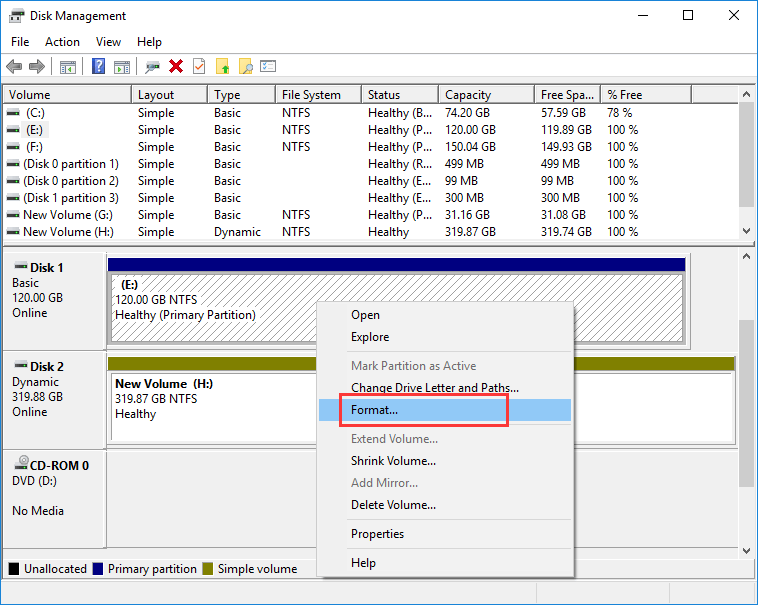
Step 3. Select a file system type you need, check the «Perform a quick format» option and click OK button.
Another message box will pop up, telling formatting this volume will erase all data on it and prompting to backup data you want to keep before formatting. Click OK button and Windows starts to format the partition at once.
Solution #2: Format the drive with free partition manager software DiskGenius Free Edition
DiskGenius Free is free partition manager software and it provides all sorts of functions regarding managing disk partitions in Windows 11/10/8/7/Vista/XP. With DiskGenius Free edition, you can format, create, delete, resize, hide, resize, extend, split, image, clone partition, partition hard drive, clone disk, wipe disk/partition permanently, check and repair bad sectors, convert disks between MBR and GPT, manage UEFI boot entries, create WinPE bootable USB disk, etc. Here is how to format a partition in DiskGenius.
ô Free Download
Step 1. Free download, install and launch DiskGenius Free edition on your computer. Right-click on the partition to be formatted, and select Format Current Partition from context menu, as below:
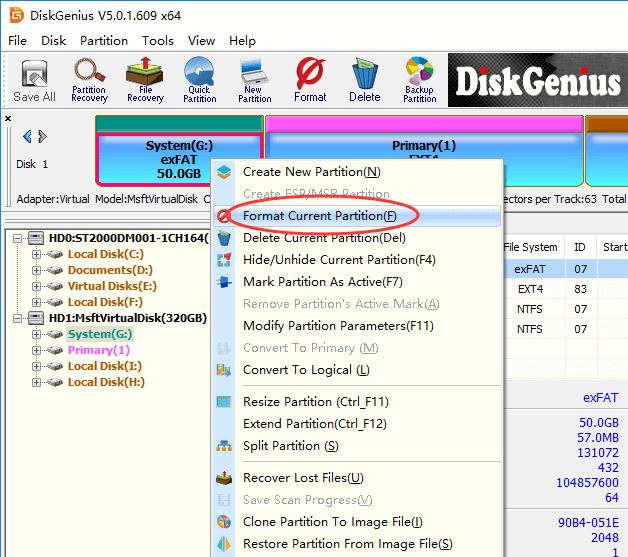
Step 2. Select a file system type from the dropdown list and click Format button.
DiskGenius supports to format a partition to NTFS, FAT32, exFAT, EXT4, EXT3 and EXT2 file system, and you can choose one in line with your requirements.
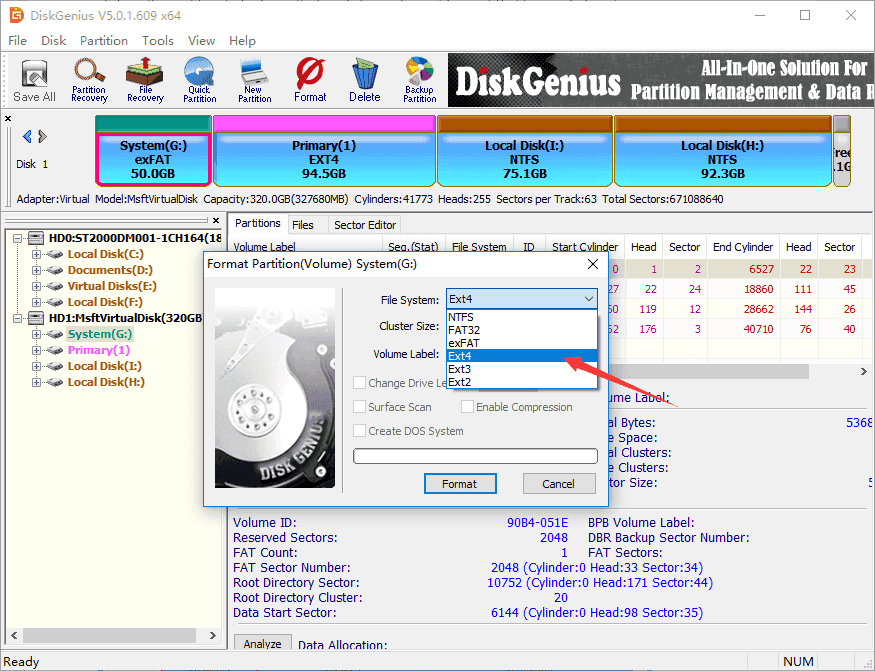
Step 3. Click Yes when the software asks to confirm the operation.
Solution #3: Complete the format via Diskpart
Step 1. Launch Command Prompt as administrators.
Type cmd in Windows searching box to find out Command Prompt, right-click it and choose Run as administrator, as the picture below:
Step 2. Type diskpart in Command Prompt and press Enter key.
Step 3. Now continue executing following command to complete the format. Remember to hit Enter key after each command.
List volume
Select volume 3 (replace 3 with the number of the volume you are going to format)
Format fs=FAT32 quick (you can replace FAT32 with NTFS, exFAT, etc. if you want to format the partition to other file system.)
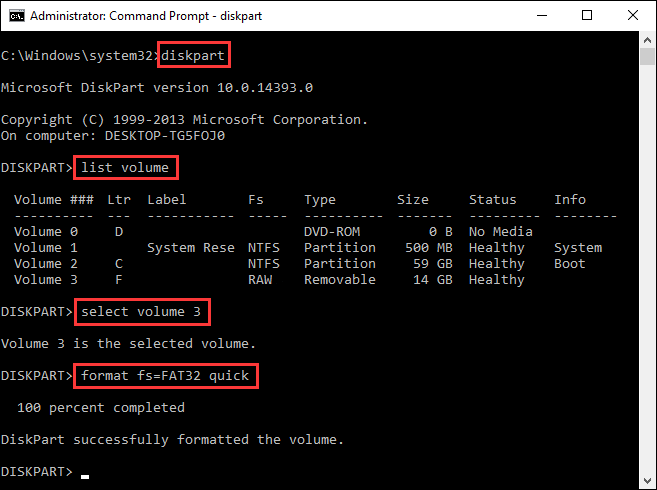
Solution #4: Clean up virus/malware
Removable storage devices are not produced with any anti-virus software, and they can infect virus when they are used on computers that are not protected by anti-virus software. When you cannot format the device, you can run an anti-virus scan for the device to clean up all possible virus and malware.
Some third-party anti-virus software can run an automatic scan for inserted disk, and thus is not recommended to disable antivirus software before connecting external drive. If you have not installed any anti-virus software, you can simply enable Windows Defender which also works well in most situations.
Solution #5: Remove the write protection
Write protection is usually the issue of SD card and USB drive. Some memory cards and USB flash drives are produced with a physical write-protection switch. If the switch is placed to the LOCK (ON) side, the drive is write-protected. In that case, you can neither formatting the drive nor making other changes. So you need to ensure the switch is put to UNLOCK (OFF) position to remove write protection. If the removable disk does not have such a switch, you can refer to this guide to remove write protection: How to fix «The disk is write protected» error on USB drives?
Solution #6: Check and repair errors for the drive
Disk checking is another useful utility provided by Windows, and it can help users to check the drive for file system errors. Follow steps here to run a disk check for the drive:
Step 1. Right-click the partition that Windows cannot format and select Properties option.
Step 2. Select Tools tab and click Check button under error checking. Then click Scan and repair drive on pop-up window, and wait for the process to finish.
Note: you won’t be able to use the drive while Windows finds and repairs any errors. This might take a while, and you might need to restart your computer.
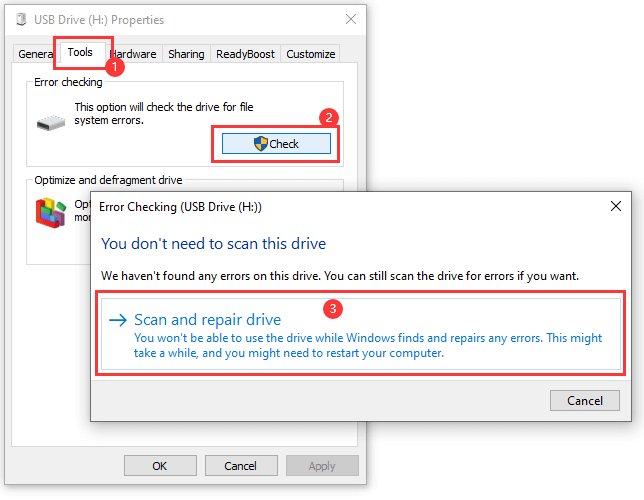
Solution #7: Check and repair bad sectors for the disk
Bad sector is one of the major causes of «Windows was unable to complete the format» error, and you can have a check for your disk to see if it contains bad sectors with DiskGenius Free Edition. Moreover, you can try repairing bad sectors if the scanning reports the disk have bad sectors.
Note: Bad sector repairing is not helpful for data recovery, instead, it may cause further damage to data. Hence, it is suggested to back up files before repairing bad sectors.
Step 1. Select the disk you want to check bad sectors and click Tools > Verify Or Repair Bad Sectors, as follows:
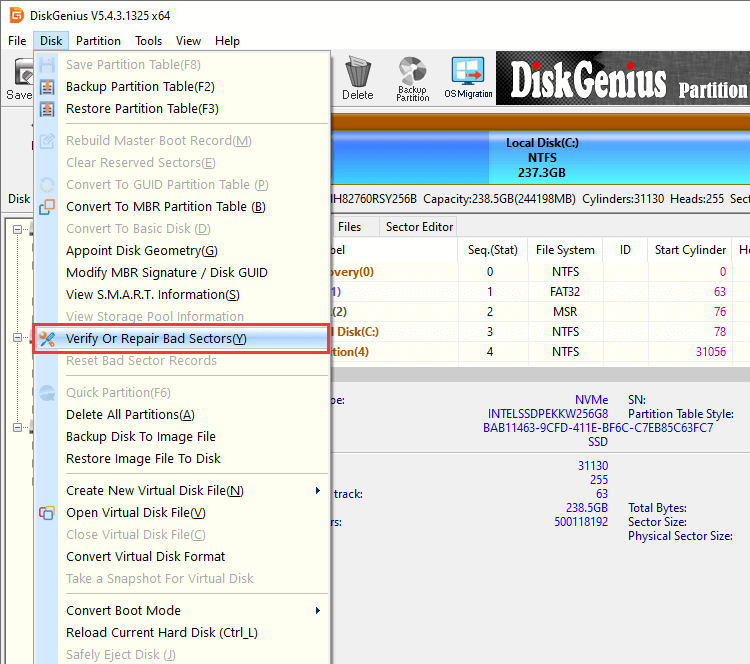
Step 2. Click Start Repair button, and DiskGenius starts to scan the disk to verify if there are bad sectors.
Tip: Close all programs that are accessing the disk and do not access the disk during the scanning in order to get an accurate result.
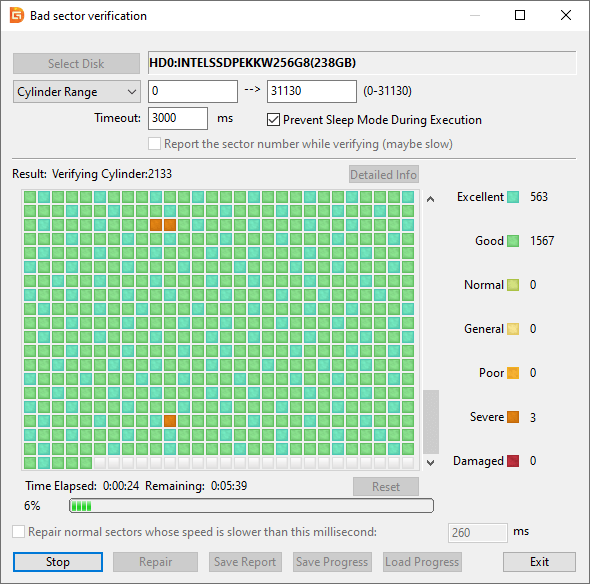
How to recover lost data when Windows was unable to complete the format SD card, USB or hard drive?
How to recover data from USB drive, SD card, hard drive or pen drive when it is not accessible? It is a common occurrence that partition turns to RAW before we can back up files in it. No worries, it is not that complicated to recover lost files. You can try DiskGenius to perform RAW partition recovery, recover files from formatted/unformatted partition, recover deleted files, restore lost partition, etc.
Step 1. Select the partition where lost files were stored, click File Recovery and click Start button. After that, DiskGenius starts to search for lost data. Wait for the scanning to complete.
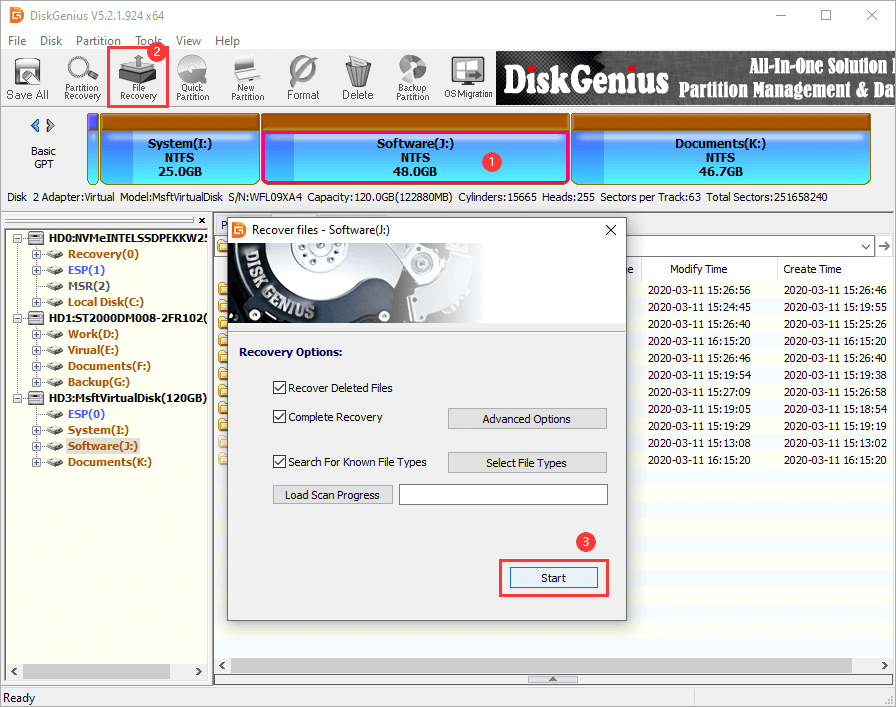
Step 2. Preview files to check if lost files are recoverable.
File preview is allowed during and after scanning, and it helps to verify if lost files can be recovered correctly. It happens that lost files got damaged after data loss, and thus you need to preview files to make sure if wanted files are corrupted.
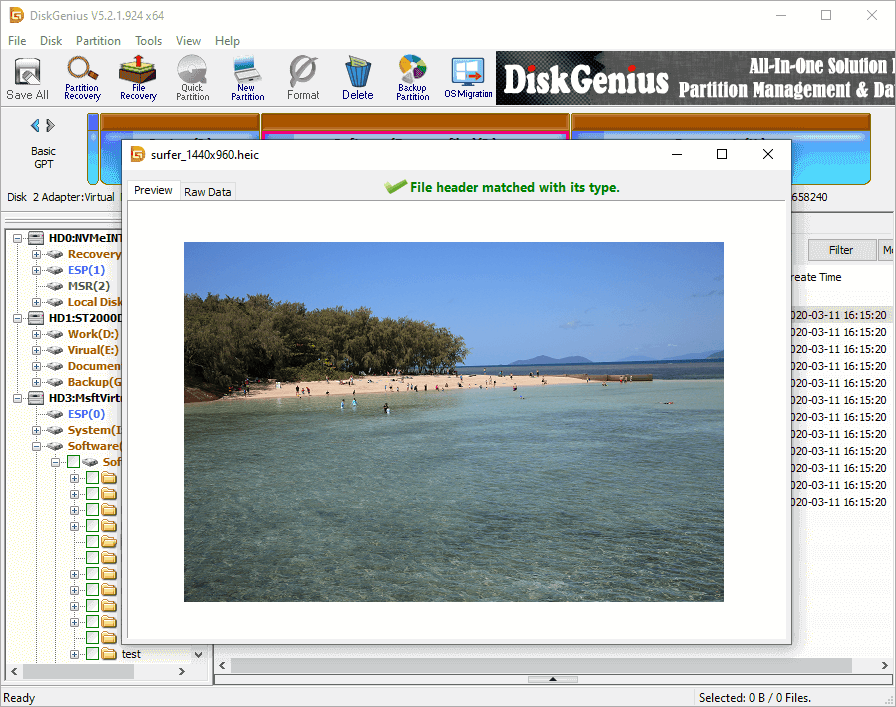
Step 3. Copy files to another partition to complete the recovery: select data > right-click to choose Copy To.
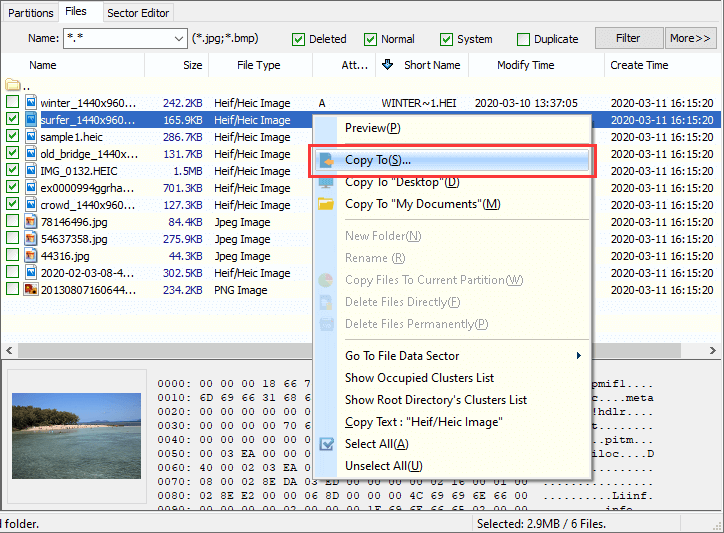
FAQs on Windows unable to format
1. What is unable to complete the format?
It refers to the error message reported by system when Windows fails to format a drive. The error can be caused by many factors, for example, virus, bad sectors, write protection, disk physical damages, etc. You can follow solutions mentioned above to get this error fixed.
2. How do I fix my flash drive unable to format?
To complete the formatting of USB flash drive, you can follow steps below:
Step 1: Connect the flash drive to your PC. Then open Disk Management.
Step 2: Right-click on the flash drive in Disk Management and select Format option.
Step 3: Choose a suitable file system type and click OK button.
3. Why can’t I format my USB?
When it comes to reasons why USB cannot be formatted, there are two aspects: write protection and bad sectors. There might be a physical switch on the USB drive, which is designed to lock the disk. Ensure the switch is placed at the UNLOCK side. If Windows still was unable to format the USB after removing write protection, you can check bad sectors for the disk using DiskGenius.
4. what to do when Windows 10 unable to format SD card?
When Windows 10 cannot complete the format for SD card, you can try force formatting it via Diskpart:
Step 1: Right-click on Start menu and select Windows PowerShell (Admin).
Step 2: Type diskpart and press enter.
Step 3: Type follow commands one by one, and press Enter key after each command.
List volume
Select volume # (replace # with the number of the SD card)
Format fs=FAT32 quick
Conclusion
In the content above, we discussed the error «Windows was unable to complete the format» and provided 7 solutions to fix it. Hope you can get the error fixed for your SD card, USB flash drive, pen drive, hard drive, etc. If your disk still cannot be formatted after trying all these solutions, the disk must be physically damaged. In that case, you can either send the disk to us to recover data or contact its manufacturer to get it repaired. Should you need any help, feel free to leave a comment or email us.
Related guides
- How to Fix «The format did not complete successfully» without data loss?
- How to fix «The file or directory is corrupted and unreadable» error in Windows 11/10/8/7?
- Solved: The volume does not contain a recognized file system in Windows 11/10/8/7
- Cannot Format SD Card? Fix SD Card Unable to Format on Windows 10/11
Formatting is a great way to reset any storage device and remains a common ‘fix-all’ solution for tackling drive-related problems. So, you may be surprised when an error message appears stating “Windows was unable to complete the format”. What gives? It seems like nothing has changed since the last time you used the drive successfully.
The reason why this is happening can range from something as simple as incorrect permissions all the way to a faulty drive component. Just like there are many reasons why this could occur, there are also many ways you can fix it. In this article, I’ll touch on several proven, ready-to-implement solutions that have fixed this problem in the past.
Why the “Windows Was Unable to Complete the Format” Message Appears
When Windows is unable to complete a format, it boils down to the operating system (OS) being unable to access the drive either at all or long enough for the new file system to be written. As you’d suspect, there are many issues that can cause this, so the devil is in the details when it comes time to troubleshoot.
In the cases I’ve come across, either from personal experience or during my research for this article, this error message can appear for the following reasons:
- 🔒 Incorrect permissions – To perform a format, the user account you’re logged in to must have write access to the drive. Without it, Windows can only read its contents. Similarly, if the drive is in a read-only state, formatting won’t work.
- ⚙️ It’s a system drive – Windows won’t let you format the system drive. This failsafe is to prevent accidentally deleting your OS and any other contents it contains. Double-check the drive you’re trying to format.
- 🔌 Poor physical connection – For external storage devices, check if the USB cable works. Faulty cables can cause intermittent disconnections, interrupting the format process. Likewise, a damaged port may cause the connection to become unstable.
- 👾 Virus is preventing the action – Albeit rarely, a malware-infected drive can contain a virus that prevents the ability to execute formats in certain ways, as seen here.
- 🟥 The device contains bad blocks – Bad blocks, or bad sectors, are parts of the drive that are no longer operational. As stated here, “When a storage device contains a certain number of bad sectors, you won’t be able to format it using Windows built-in tools.”
In my opinion, 99% of the time the problem is fixable. However, if you discover that the drive is inoperable due to a malfunctioning hardware component, like a failing storage controller, formatting will not be enough to fix the drive. Instead, you should recover the data you can and replace the drive.
I encourage you to try each step down below methodically. The methods are arranged in a logical way that hopes to eliminate any common oversights.
Method 1: Check the Physical Connection
When you encounter “Windows was unable to complete the format” with a USB drive or USB-connected device, it’s imperative that you check the connection points. As opposed to internal drives, portable storage media like USB drives are much more liable to physical wear over time since they’re constantly being handled.
Inspect the connection for:
- Bent pins
- Dust, dirt, or debris
- Exposed circuitry
- Loose fittings
Method 2: Check Your Permissions
This will happen if your user account doesn’t have the appropriate permissions to interact with the drive. In this case, Windows is unable to complete the format until either (a) you use a user account with the correct permissions, or (b) you grant the current user account the necessary access.
⚠️
This method is only viable for disks using the NTFS file system, as exFAT and FAT do not have the same access control security features.
Follow these steps to provide your user account with the necessary permissions. Bear in mind that this must be performed on an account that can grant access:
- Open File Explorer.
- Right-click the drive and click Properties.
- Click Security.
- Click Advanced.
- Click Change permissions.
- Click Add.
- Click Select a principal.
- Enter your username and click Check Names. Click OK.
- Tick Full control, then click OK.
Method 3: Disable Read-only Mode
This method is particularly important for SD card users who are facing this problem. When you get the message “Windows was unable to complete the format” with an SD card, ensure the read-only switch is at the top, meaning it’s unlocked. For other types of storage devices, it’s a little bit more difficult, but still very much possible.
Here’s how you can remove the read-only attribute from the drive:
- Right-click Start and click Terminal (Admin).
- Type diskpart. Press Enter.
- Type list disk. Press Enter. Make note of the disk number associated with your storage device.
- Type select disk *, replacing * with your disk number.
- Type attributes disk clear readonly. Press Enter.
Method 4: Use an Alternative Formatting Method
Sometimes you’ll encounter a problem where you can’t format a drive using the same method you usually do, as mentioned here when a Reddit user was facing the same problem. Any time I’ve run into an issue formatting through Disk Management or File Explorer, formatting through a command-line interface (CLI) has always worked.
If Windows is unable to complete the format through Disk Management or File Explorer, follow these steps to do it with the diskpart command:
- Right-click Start and click Terminal (Admin).
- Type diskpart. Press Enter.
- Type list disk. Make note of the disk number associated with the drive you want to format.
- Type select disk *. Replace * with the appropriate disk number. Press Enter.
- Type clean. Press Enter.
- Type create partition primary. Press Enter.
- Type format fs=ntfs label=* quick. Replace * with the desired name for the drive. If you want to another file system, like FAT32, be sure to update the command appropriately.
- Type assign. Press Enter.
Method 5: Format With a Different Operating System
Using a Ubuntu live USB drive, you can use GParted to delete your partition and create a new one. This is a good way to circumvent your host OS in case Windows was unable to complete the format using one of the aforementioned methods, with the added advantage of not having to perform a completely fresh install.
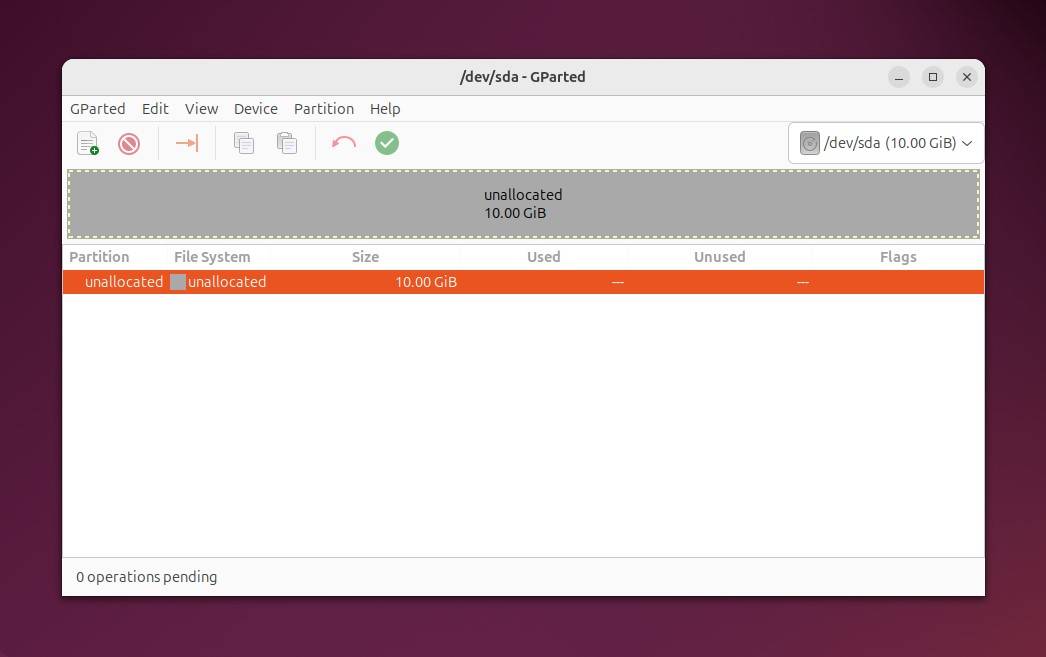
This is quite an advanced solution that you’ll only find mentioned in some cases, which is why it’s a little bit lower on the list. You will need to know how to create a live USB drive (with a tool like Rufus), and then run it on your computer. Nevertheless, it is a very effective way of formatting a drive, especially considering it’s free, operates outside the OS, and includes a graphical user interface (GUI).
Method 6: Scan the Drive for Problems
Provded the partition on your drive still contains a functioning file system, you can attempt to find and resolve disk errors using CHKDSK, a file system-repair tool included with Windows. In the event that the issue is caused by a logical problem, CHKDSK may be all you need to restore the ability to perform a format.
Here’s how you can run CHKDSK:
- Right-click Start and click Terminal (Admin).
- Type chkdsk *: /r. Replace * with the drive letter assigned to the drive you’re trying to format. Press Enter.
I prefer using the /r parameter because it includes the functionality of /f (which fixes file system errors) with the added ability to scan for bad sectors.
The caveat of CHKDSK is that it only works if a file system is present. If your file system is inoperable and the disk is displayed as RAW, you’ll need to use a third-party tool like Victoria for Windows which is used for diagnostics and minor repairs.
This is how you can use Victoria to scan the drive for problems:
- Download and open Victoria.
- Click Test & Repair. By default, it will ignore (but make note of) bad sectors that it finds.
- Click Scan.
- Once the scan is complete, you can change the scan action from Ignore to Remap if bad sectors were discovered and you wish to remap them to spare sectors.
Method 7: Perform a Low-level Format
The term low-level format is rarely used nowadays. Instead, you’ll be more likely to be familiar with two options: quick format and full format. A low-level format is similar to a full format in that it deletes the file system structure and then writes raw data (usually zeros) to each sector on the drive. During this process, it maps out and disables bad sectors at the hardware level.
Low-level formats are performed by manufacturers before the drive leaves the factory. If you suspect a sudden increase in bad sectors is the culprit behind being unable to format, a low-level format can map out new ones and replace them with reserves.
This is how you perform a low-level format with the HDD LLF Low Level Format Tool:
- Download the Low Level Format Tool.
- Select the drive you wish to low-level format. Click Continue.
- Click the Low-level Format tab.
- Tick Perform quick wipe (just remove partitions and MBR) and click Format this device.
Method 8: Replace the Disk
If none of the previous methods have worked to fix the “Windows was unable to format” message, I’d say it’s time to accept the fact that the drive may be beyond repair. A good indication of this is if you’ve already tried several ways to format it with no success, like with this Windows user who simply received one message after another.
Disk Turned RAW? Need Your Data Back? Try Data Recovery Software
You may find yourself in a spot where you need to get the data from the drive before doing anything or something went ‘wrong’ during the fixes. It could be that your disk turned RAW before you were able to transfer the files and format the disk, or you were able to perform the format successfully, only to realize that there were some files you still needed. In either of these cases, you’ll need to recover the data using a data recovery tool.
Disk Drill is a great data recovery option because it can recover data from disks that have become RAW, as well as those that have been quick formatted. It uses several scanning algorithms to find as much recoverable data on the drive as possible, allowing you to pick and choose what you’d like to restore.
Here’s a quick look at what it looks like to use Disk Drill:
- Download and install Disk Drill.
- Select the drive experiencing the problems, then click Search for lost data.
- Click Review found items to see what was discovered.
- Choose what files you wish to recover from the disk, then click Recover.
- Select a recovery location on a separate physical disk, then click Next.
❗️
Should the drive fail to boot, data recovery may need to be performed by a data recovery specialist instead.
Conclusion
What’s worse than having to format a drive to fix it? Being unable to complete a format. Using one of the methods outlined in this article, I’m confident that you’ll be able to format your drive, one way or another. But remember that it can happen again, so here are a few tips to keep your disk, and its data, safe going forward:
- Back it up. Whether you’re just creating backups of your most important files, or backing up the entire disk, creating a backup is the best way of keeping the data safe.
- Monitor disk health. Your drive has valuable SMART data that keeps a record of its vitals. Checking drive health every so often, or using an app to monitor it for you, is a great idea.
- Use anti-malware software. Whether it’s relying on Windows Security or opting for a third-party solution, having one monitoring your computer at all times goes hand-in-hand with practicing good internet safety.
FAQ
What does the “Windows was unable to complete the format” error mean?
Windows displays this message when something has prevented or interrupted the formatting process. It’s a general error message that can point to a number of problems, acting more as a sign that something is wrong than a specific indication of what is wrong.
How can I check if my drive has bad sectors?
Run a surface test. A surface test will attempt to read (and in some tests, write) the data in each sector. If a sector takes too long to respond, it will be marked as bad. Logical bad sectors can be repaired, while physical ones are permanently unusable.
Is it safe to format a RAW drive?
If your file system becomes lost, it’s possible for it to become RAW. In cases where you want to fix the RAW drive without formatting because there’s data you want to keep, you’ll have to recover the data first before formatting. However, if it’s a brand-new drive or you no longer want the data on it, formatting is the only way to get it working again.
How can I format a drive that appears in Device Manager but not Explorer?
An external hard drive may show up in Device Manager but not Explorer because it’s using an incompatible file system or it hasn’t been assigned a drive letter. Either way, the drive can still be formatted through Disk Management, CMD (with diskpart), or on another computer with an OS that can read the existing file system.
About article
This article was written by Jordan Jamieson-Mane, a Staff Writer at Handy Recovery Advisor. It was also verified for technical accuracy by Andrey Vasilyev, our editorial advisor.
Curious about our content creation process? Take a look at our Editor Guidelines.
How do you rate the article?
Submitted:
This page discusses the reasons behind the «Windows was unable to complete the format» error and presents 5 effective methods to assist all Windows users in effortlessly resolving this issue from USB flash drives, SD cards, external hard drives, and other devices. If you encountered difficulty formatting your USB or SD card, relax and follow the guidelines provided to complete the format process smoothly.
Error: Windows was unable to complete the format
Formatting a Micro SD card, USB flash drive, pen drive, hard drive, or SSD is a routine task for regular users to change the device file system and reclaim its full capacity, and most of us are familiar with it. However, there might be instances when you fail to finish formatting on a Windows PC, as demonstrated in the scenarios below:
Case 1 — Windows is unable to complete the format on USB
«Yesterday, Windows prompted me to format my USB flash drive when I plugged it into the computer. However, when I attempted to reformat it to FAT32, I encountered an error saying ‘Windows was unable to complete the format.’ How can I resolve this issue?»
Case 2 — Windows was unable to complete the format on the SD card
Translation:
Scenario 2 — Windows was unable to finish formatting the SD card
«I have an issue with my micro SD card. I am unable to format it. I get an error message saying ‘Windows was unable to complete the format.’ What can I do about this?»
What does “Windows was unable to complete the format” mean? “Windows was unable to complete the format” is an error message displayed in a pop-up window, cautioning users that the Windows operating system cannot perform the formatting process on the selected device to alter the file system and render the problematic device functional again.
Remain calm if you’re unable to format an SD card, USB, external hard drive, or other devices on a Windows PC. First, investigate the reasons behind this error. Afterwards, apply the appropriate solution and refer to the guide steps to resolve the «Windows was unable to complete the format» issue on your device, successfully formatting it.
For an instant solution to the ‘Windows was unable to complete the format’ issue, you can fully rely on the professional formatting tool — tools Partition Master as shown in Method 1 below for assistance.
Causes of «Windows Unable to Complete Format» Error
There can be various reasons that might prevent Windows from completing the formatting process on your devices. Here’s a list of the primary reasons explaining why Windows is unable to format USB drives, SD cards, external hard drives, and other such devices:
#1. The device has a file system error.

When a storage device shows up as RAW or contains an unsupported file system like Linux Ext2/3/4, Windows won’t be able to format it directly using File Explorer or Disk Management. To resolve this issue, you’ll need a third-party formatting tool for assistance.
#2. Presence of bad sectors on USB, SD Card
When a storage device hits a certain number of bad sectors, you won’t be able to format it with Windows’ default tools. To get the device back in shape and finish formatting a USB or SD card, you can run a disk error check and employ a bad sector repair utility to fix those errors.
#3. Virus or malware infection
When your storage device is infected by a virus or malware, you cannot access the saved data or format the device normally. You must first remove the virus and then proceed with formatting.
#4. The device is locked or protected by third-party software
If your USB or SD card becomes locked or write-protected by third-party software, you also won’t be able to format the device. You must first remove the write protection before you can format your SD card or USB drive.
#5. Physical damage
When your storage device is physically damaged, there’s not much you can do aside from taking it to a local manual repair center or buying a new one to replace the damaged device.
# 7 Solutions for «Windows Was Unable to Complete the Format» Error
Partly, we’ll guide you through 6+ practical methods to resolve the ‘Windows was unable to complete the format’ error. Since the causes vary, the solutions might differ as well. Review and apply the appropriate method to effortlessly eliminate this error now.
Method 1: Utilize Partition Master Tool
Applies to: Resolve the «Windows was unable to complete the format» issue due to a file system error or unsupported file system on USB, SD card, hard drive, etc.
If your storage devices cannot be formatted due to a file system error, such as a USB showing as RAW in Disk Management, tools like Partition Master can effectively format your device to a Windows-supported file system, such as NTFS, FAT32, or exFAT, with ease.
Follow the steps to learn how to fix file system errors on your SD card or USB drive using this software, and then format the drive with just a few simple clicks:
Step 1. Run AOMEI Partition Assistant, right-click the hard drive partition you intend to format and choose «Format».

Step 2. In the new window, set the Partition label, File system (NTFS/FAT32/EXT2/EXT3/EXT4/exFAT), and Cluster size for the partition to be formatted, then click «OK».
Format Hard Drive Partition — Step 2

Step 3. You’ll see a warning message; click «Yes» to proceed.

Step 4. Click the «Execute 1 Task(s)» button to review the changes, then click «Apply» to start formatting the partition on your hard drive.

Do you like using this powerful tool to fix the «Windows was unable to format» error? If you find it helpful, please share it with others in need by clicking the buttons below!
I’ll provide the translations in American English for each of the language names you’ve listed:
1. Chinese (中文): Chinese
2. Japanese (日本語): Japanese
3. Korean (한국어): Korean
4. French (Français): French
5. German (Deutsch): German
6. Spanish (Español): Spanish
7. Russian (Русский): Russian
8. Arabic (العربية): Arabic
9. Italian (Italiano): Italian
10. Portuguese (Português): Portuguese
If you have specific phrases or sentences you’d like translated into these languages, please provide them.
Method 2: Use the Diskpart Command
Applies to: Resolving the error «Windows unable to format USB, SD, or other device» due to file system issues or bad sectors.
When you fail to format USB, SD card, or other storage devices using Windows File Explorer, the Diskpart formatting command can also help you complete the format.
Here are the steps in English:
Step 1. Right-click the Windows icon, type command prompt in Search, right-click Command Prompt, and select «Run as administrator».
Step 2. Type diskpart in Command Prompt and press Enter.
Step 3. Press Enter after typing each of the following command lines in DiskPart to quickly format the hard drive:
- Translate the following commands into English:
- list disk
- select disk 2 (Replace 2 with the disk number you want to select)
- list volume
- select volume 10 (Replace 10 with the volume number of the device you want to format)
- format fs=ntfs quick (If you need to format a storage device to FAT32 or other file systems, replace NTFS with FAT32, exFAT, etc.)
Step 4. Type exit and press Enter to close the program when DiskPart reports that it has successfully formatted the volume.

Click the video below to learn more details about how to use CMD.
Method 3: Use Disk Management
Applies to: Solve the «Windows was unable to complete the format» error resulting from a RAW file system issue on USB, SD card, hard drive, etc.
When your storage device turns RAW and Windows fails to complete the format, you can attempt formatting using Windows Disk Management:
Step 1. Connect your device to your PC if you’re formatting a removable device.
Step 2. Right-click on «This PC» and select «Manage,» then choose «Disk Management.»
Step 3. Locate and right-click on your USB flash drive or external hard drive, and then select «Format».
Step 4. Set the file system of your USB, SD card, or hard drive to NTFS or FAT32, check «Quick Format,» then click «OK» to confirm.
Format USB to FAT32.
Method 4: Remove the virus.
Applies to: Resolving the «Windows was unable to complete the format» issue on a device that is locked due to a virus or malware infection.
If your device is locked or infected by viruses or unknown malware, your Windows computer will be unable to format your USB, SD card, or other storage devices. The best solution is to run antivirus software to clean the device and remove the lock.
If you’re not familiar with antivirus software, TotalAV is one of the tools you can consider. It allows you to protect your data and privacy from viruses, malware, and online threats in real-time.
TOTALAV
TotalAV is an Award-Winning Antivirus and Security Software. It offers Real-Time Protection against Viruses, Malware, and Online Threats.
Step 1. Connect your external storage device, such as a USB or SD card, to your computer.
Step 2. Run a virus cleaner, malware removal tool, or antivirus software on your computer and choose the target device to eliminate any existing viruses or malware.
Step 3. After that, you can reformat the device using Windows File Explorer or any of the three formatting tools mentioned above.
You can also remove virus without antivirus by using Windows Defender and enabling the real-time virus protection feature. This helps protect your device and data from viruses and malware infections.
Method 5: Remove Write Protection from the Device
Applies to: Remove write protection and enable Windows to complete the format on USB, SD card, external hard drive, etc., devices.
If your target device is locked or write-protected by a password or third-party software, Windows cannot directly format your storage device. You’ll need to unlock the device first, and then proceed with the formatting process:
< strong >First. Remove Device Write Protection< /strong >- 3 Ways
#1. Unlock USB/SD Card
Step 1. Connect your device to your PC.
Step 2. Slide the switch on your USB or SD card to the OFF position.
Then, try formatting the device on Windows using File Explorer or another device.
#2. Remove Write Protection from USB/SD
Here’s a write protection removal tool called CleanGenius for you to use, which can directly remove the write protection from your device:
If you don’t consider yourself a power computer user and you’re not familiar with command lines, don’t worry. There are graphical-based solutions to help you remove write-protection from your hard drives, USB drives, and even SD cards.
CleanGenius is one of these tools that helps you fix aforementioned issues on your drives without knowing a thing about command-line.
Here’s a simple step-by-step guide on how to utilize this tool to address your concerns:
Step 1: DOWNLOAD and install the tool CleanGenius (free) on your computer.
Step 2: Run CleanGenius on your PC, select Optimization and choose the Write Protection mode.
Disable Write Protection
Step 3: Select the device that is write-protected and click Disable to remove the protection.
Disable Write Protection from storage devices.

#3. Unlock device using a password or third-party software
Translate to English:
#3. Unlock the device using a password or third-party software
If your storage device is write-protected using a password or third-party software, you’ll need to use the password or software again to unlock your SD, USB, etc., devices.
Next, format the device — Complete Windows Formatting
Now, you can reformat the device using Windows File Explorer, Disk Management, the Diskpart command, or tools like Partition Master.
Step 1. Connect the USB drive or SD card that you want to format to your computer, and then open Windows Explorer.
Step 2. Right-click on the connected device and select «Format.»
Step 3. On the Format window, select the desired file system: NTFS for a hard drive partition, FAT32 for a 32GB SD/USB drive, and exFAT for a 64GB or larger SD/USB drive.
Step 4. Check «Quick format» and click «Start».
«Format SD card using File Explorer»
Method 6: Check and Fix Disk Errors That Prevent Windows from Completing the Format
Applies to: Resolve the «Windows unable to format» device error due to disk error.
Step 1. Open File Explorer, connect your device to the PC, and right-click on the problematic device. Select «Properties».
Step 2. Under the Tools tab, click the Check button under «Error checking».
Check and fix disk error on storage device
Step 3. Next, you can choose to Scan drive if desired, or Repair drive if errors are found.
Wait for the process to finish.
Step 4. Right-click on your device and finish formatting through Windows File Explorer.
Method 7: Repair Bad Sectors that Prevent Windows from Formatting the Storage Device
Applies to: Fixes and repairs soft bad sectors that prevent Windows from formatting the device.
When a storage device has a few soft bad sectors, the Windows formatting tool won’t work. You can either use a utility like Partition Master with its File System Checker to fix the bad sectors, or first run a CMD command to repair the soft bad sectors and then proceed with the format.
Step 1. Run the CHKDSK command to fix soft bad sectors.
1. Type cmd in the Search box, right-click «Command Prompt,» and choose «Run as administrator.»
2. Type chkdsk E: /f /r /x and press Enter. (Replace E with the drive letter of your storage device.)

Step 2. Format the storage device to make it usable again
1. Open Windows File Explorer, locate and right-click on your hard drive.
Translation:
Open the Windows File Explorer, find and right-click on your hard drive.
2. Click “Format”, set the file system as NTFS, check “Quick Format” and click “Start”.
Bonus Tip: Recover Lost Data after Completing Windows Format
Applies to: Restore lost data from a failed storage device following the resolution of the «Windows cannot complete the format» error and formatting the device.
When you finish formatting the faulty storage device which Windows was unable to format, you may lose the saved data. The only thing that you can do is to turn to reliable data recovery software and restore precious data immediately.
Here, we recommend trying the tool Data Recovery Wizard. It supports scanning and restoring all your data in just three steps, as long as the device can be detected by a Windows computer:
Step 1. Run the tool, Data Recovery Wizard. Select the drive where you lost your files and initiate the scanning process. This software enables you to recover lost data from various devices, including HDD, SSD, USB drive, SD card, pen drive, camera, and so on.

This HTML code snippet represents an image with a caption «select a location to scan.» The image has a height of 466 pixels, a width of 700 pixels, and its source is «/images/en/data-recovery/drw-pro/screenshots/recover-lost-data-step1.png.» The class «img_box_pop pop_img» suggests it’s part of a pop-up or highlighted image display. In English, the context implies that the image is likely from a data recovery software and guides users through the process of selecting a location to scan for lost data.
Step 2. Browse the full scan results. You can select the file type you need by clicking on the file type filter. The data recovery software supports over 1000 file types, including photos, videos, documents, emails, audio files, and many more.

Step 3. Select the files you wish to preview. Click «Recover» and specify a location to save the retrieved data.

Once your precious data is restored, you can save your data back onto the USB or SD card again.
Conclusion
This page provides solutions to the question «How do I fix ‘Windows was unable to complete the format?'», offering 7 effective methods to resolve this issue on your USB, SD card, external or internal hard drive.
For a reliable and effective formatting software, Partition Master is recommended for you to try. It simplifies the process of formatting your device on a Windows PC. Should you have any advanced partitioning needs, it can assist with those as well.
Frequently Asked Questions About Formatting Hard Drive
If you have any further questions regarding formatting devices, consult the following FAQs for assistance:
1. How do I fix a hard drive that won’t format?
To fix a hard drive that won’t format, follow these steps:
1. **Check Connections**: Ensure the hard drive is properly connected to your computer, either through an internal connection or an external USB port.
2. **Use Different Software**: Try using different formatting tools, such as the built-in Windows Disk Management utility or third-party software like tools Partition Master or MiniTool Partition Wizard.
3. **Boot into Safe Mode**: If the issue persists, restart your computer and boot into Safe Mode, then attempt to format the hard drive.
4. **Scan for Bad Sectors**: Run a disk utility tool (e.g., chkdsk in Windows or Disk Utility on macOS) to check for bad sectors and repair them if possible.
5. **Initialize the Drive**: In Windows Disk Management, right-click the unformatted drive and select «Initialize Disk.» Choose the appropriate partition style (MBR or GPT).
6. **Format with Different File System**: Try formatting the drive with a different file system (e.g., NTFS, FAT32, or exFAT).
7. **Command Prompt Formatting**: Use the Command Prompt to format the drive with the following command: `format X: /FS:FileSystem /Q`, replacing «X» with the drive letter and «FileSystem» with the desired file system (e.g., NTFS).
8. **Factory Reset**: If all else fails, you may need to use the manufacturer’s provided software to perform a factory reset on the hard drive.
9. **Professional Help**: If the problem continues, consider consulting a professional data recovery service or contacting the hard drive manufacturer for further assistance.
First, you need to check the hard drive status: whether Windows can detect the hard drive.
If yes, apply tools Partition Master to directly format your hard drive with the provided steps in Method 1 on this page.
If not, or if your hard drive appears as unknown or unallocated, create a new partition on your hard drive and format the drive.
**2. Why can’t I format my hard drive?**
As described on this page, when your hard drive gets locked, damaged, or contains file system error, bad sectors, or even virus-infected, you can’t directly format it.
To address this issue, you can attempt the following three approaches:
1). Unlock hard drive using password or third-party software;
2). Format the hard drive to remove the password or encryption;
3). Use a professional data recovery tool to retrieve data from the locked hard drive;
4). Check if there’s a built-in unlock feature in the hard drive’s firmware or settings;
5). Contact the hard drive manufacturer for technical support or specialized unlocking services;
6). Utilize a disk utility from the operating system’s installation media to attempt to unlock or repair the drive;
7). If the hard drive is physically damaged, consult a data recovery specialist for assistance.
2). Remove viruses and malware from the hard drive;
3). Format the hard drive using tools such as Partition Master, Diskpart, or the Disk Management formatting utility.
For more details, follow the methods provided on this page as a guide.
3. How do I fix my flash drive unable to format?
To fix a flash drive that is unable to format, follow these steps:
1. **Try Different Formatting Tools:**
— Use the built-in formatting tool on your operating system (Windows’ «Format» utility or macOS’ «Disk Utility»).
— Try alternative tools like tools Partition Master Free or H2Testw.
2. **Check for Viruses/Malware:**
— Use an antivirus software to scan and remove any potential threats.
— Perform a full system scan and clean the infected files.
3. **chkdsk Command:**
— Connect the flash drive to your computer and open Command Prompt as an administrator.
— Type `chkdsk G: /f /r` (replace «G:» with your flash drive letter) and press Enter.
— Let the process complete and try formatting again.
4. **Change File System:**
— In the formatting utility, select a different file system (e.g., NTFS, FAT32, exFAT).
— Sometimes, changing the allocation unit size might also help.
5. **Format in Safe Mode:**
— Boot your computer in Safe Mode and attempt to format the drive.
6. **Repair the Drive:**
— In Disk Utility (macOS) or Windows’ Disk Management, try repairing the drive.
— If it’s not recognized, choose «Create new volume» or «Initialize Disk.»
7. **Factory Reset:**
— Some flash drives have a hardware reset button or pinhole. Press it to reset the drive to its original state.
8. **Contact Manufacturer Support:**
— If all else fails, contact the manufacturer’s support for assistance or warranty replacement.
Remember to backup any important data before attempting to format the drive.
When you’re unable to format a flash drive, try the following steps:
Step 1. Connect the flash drive to the PC and unlock the USB if it’s locked.
Translation:
Step 1. Connect the USB flash drive to the computer and unlock it if it’s password protected.
Step 2: Run virus cleaner software to remove any hidden viruses or malware.
Step 3. Run Windows Disk Management or use tools like Partition Master
Step 4: Right-click on the USB flash drive and select «Format». Choose a new file system for the drive.
Step 5. Reset the file system for the flash drive and click «OK» to confirm.
After this, you can reuse the flash drive to transfer data and save files again.

